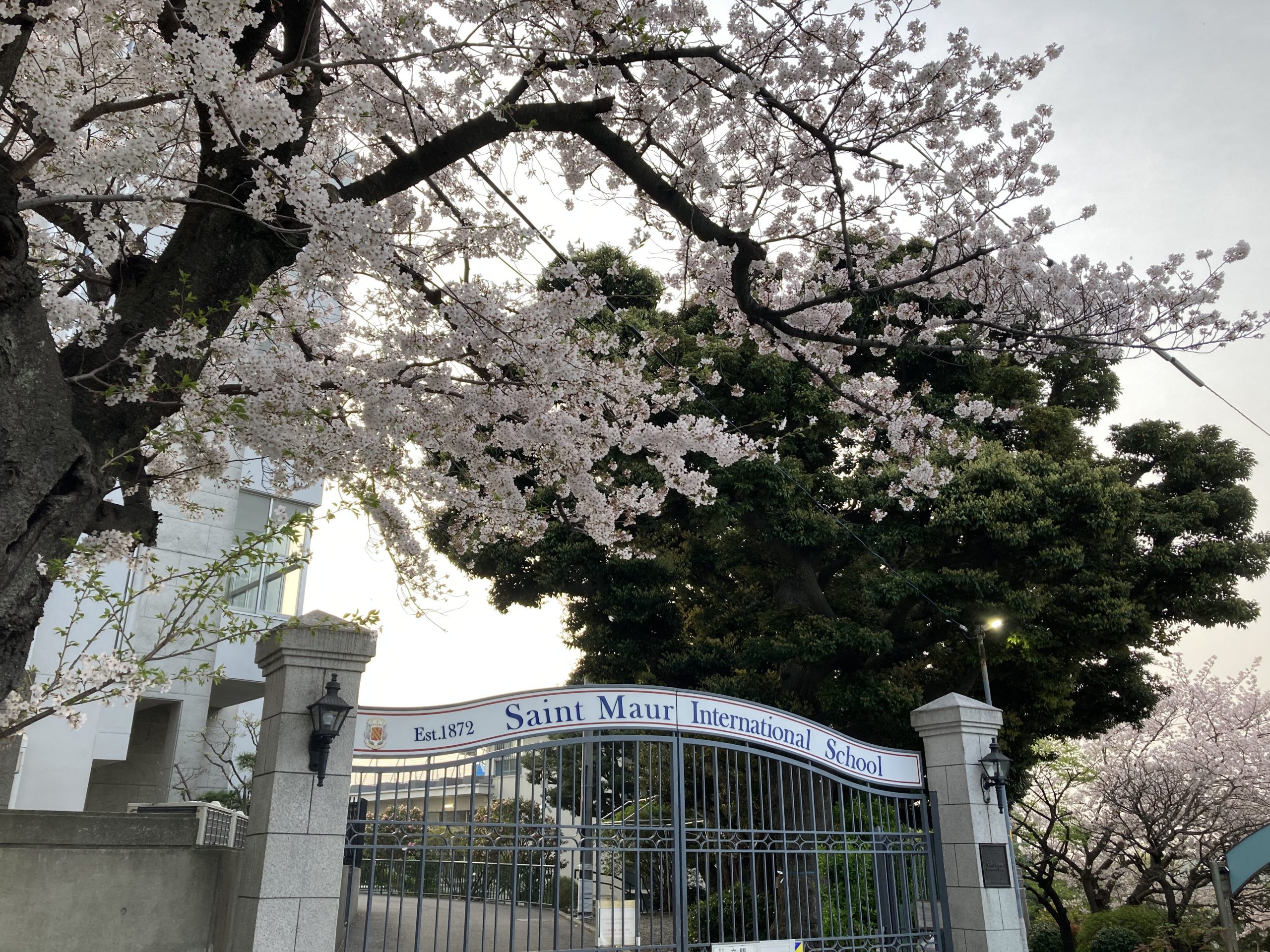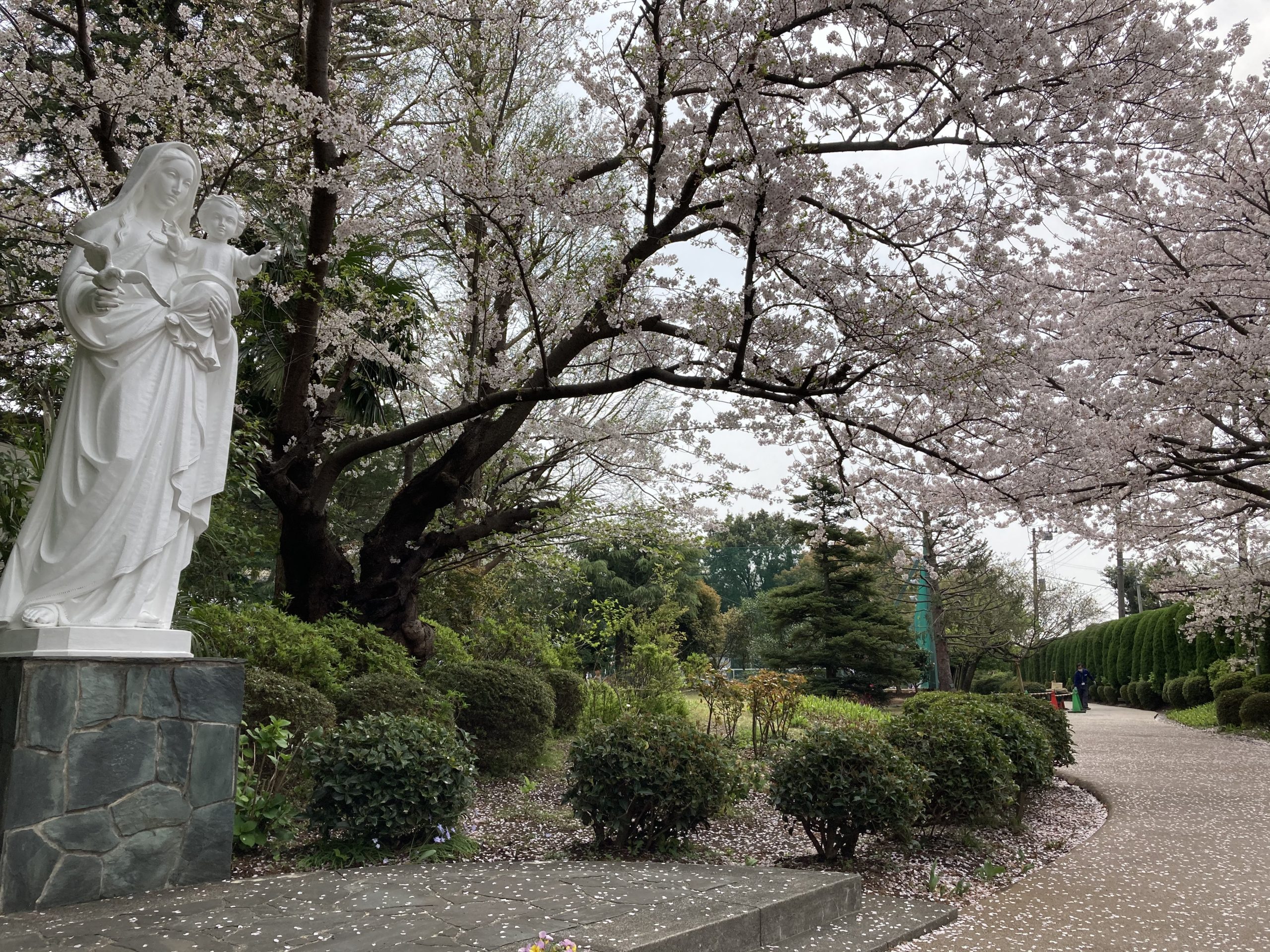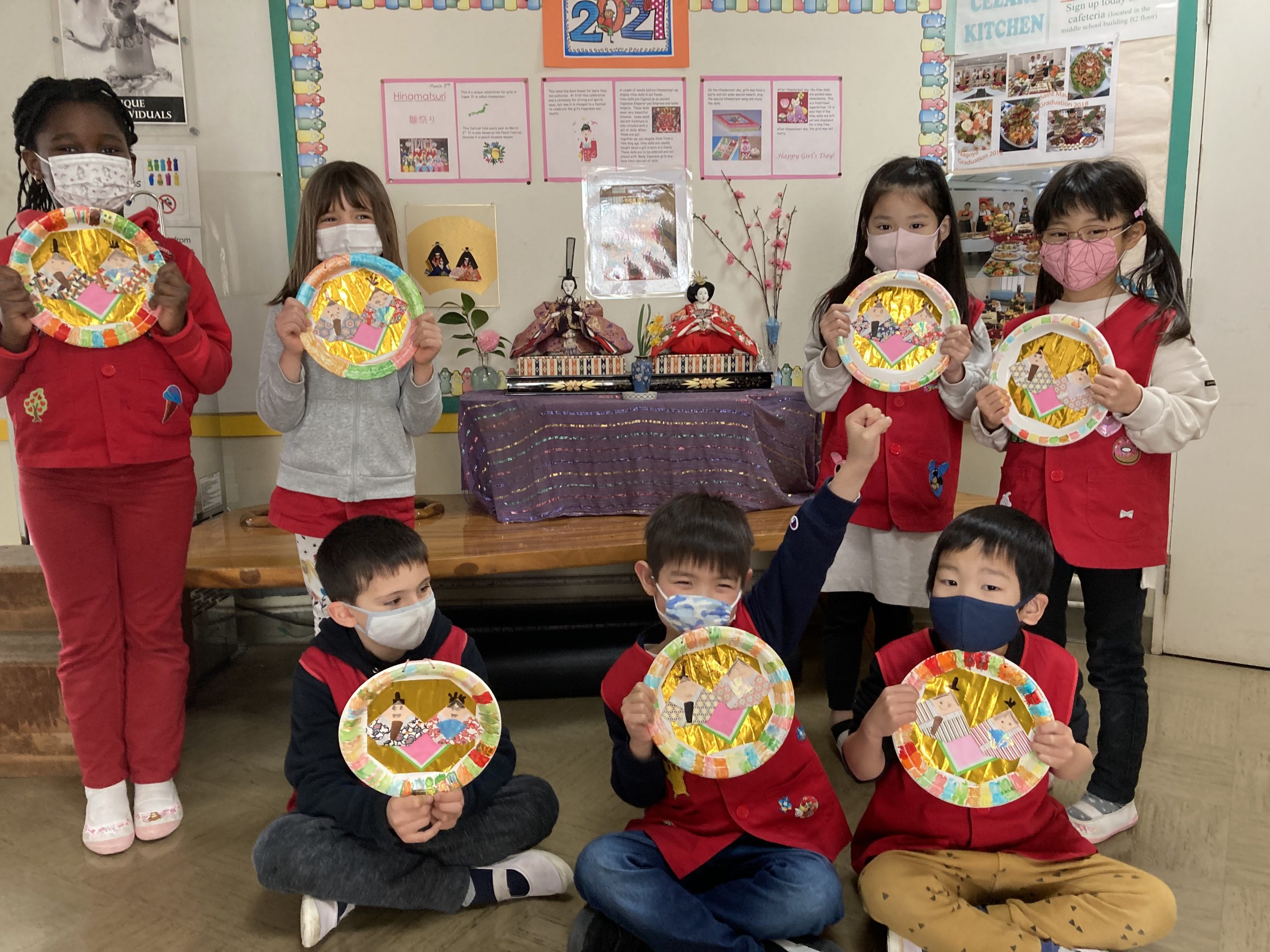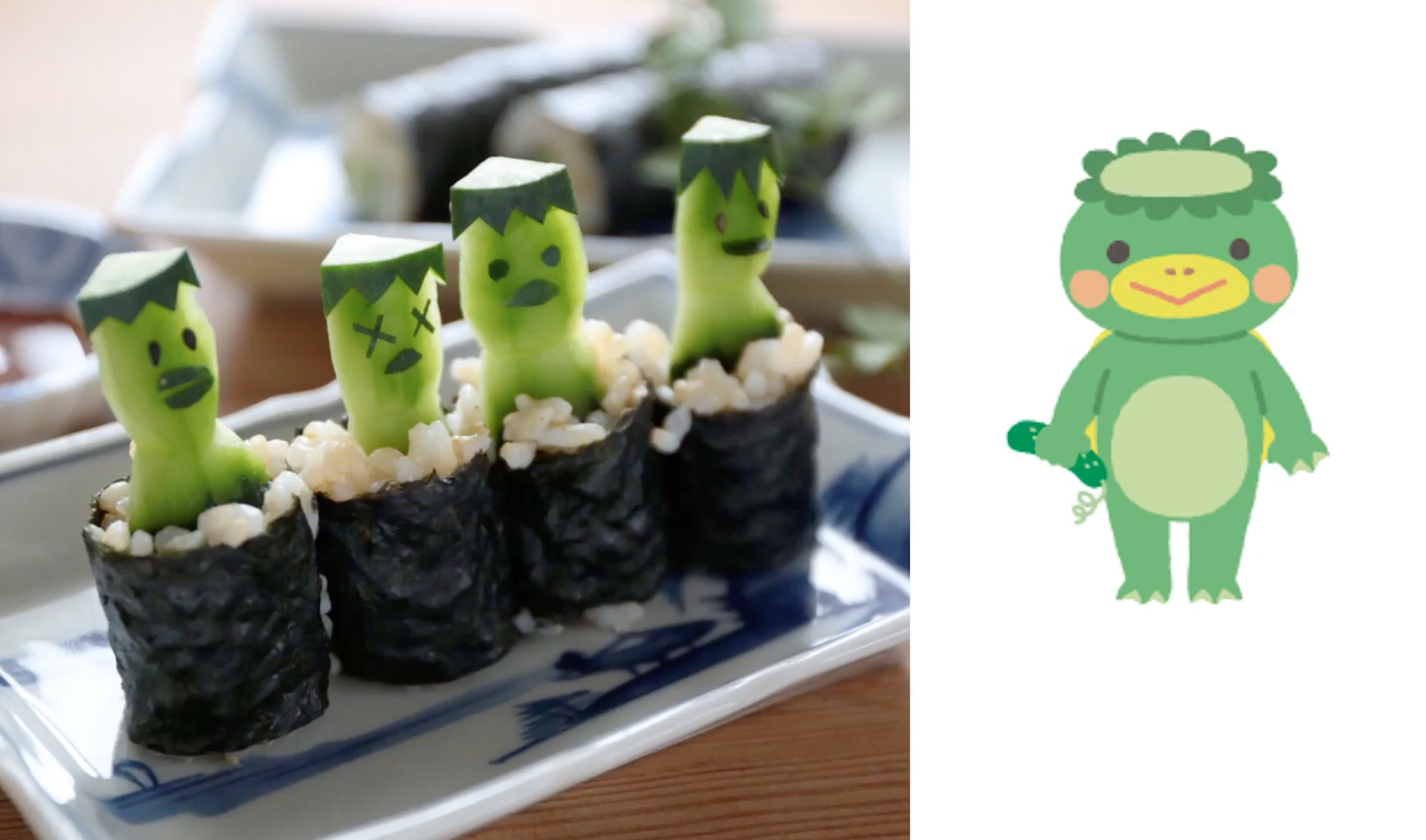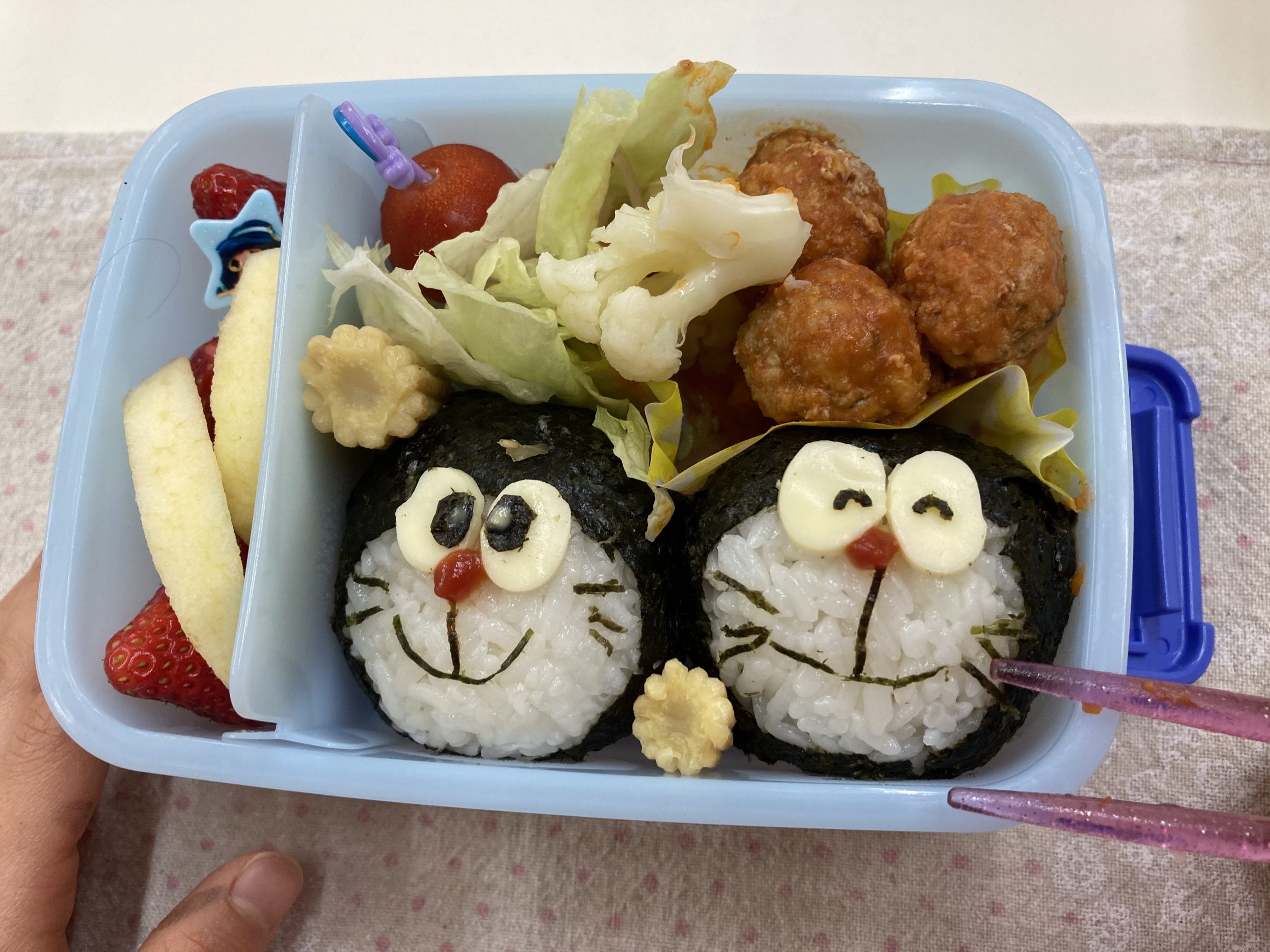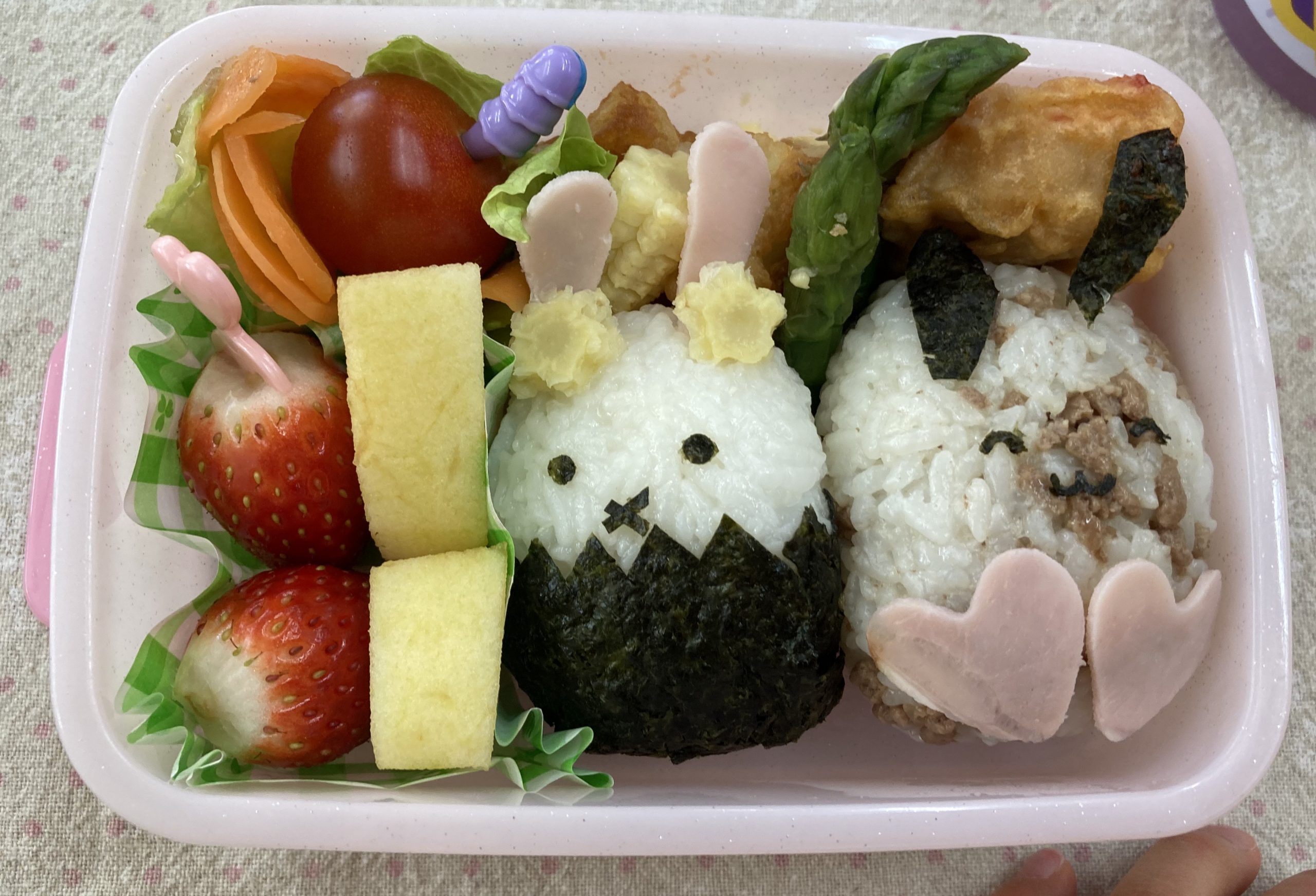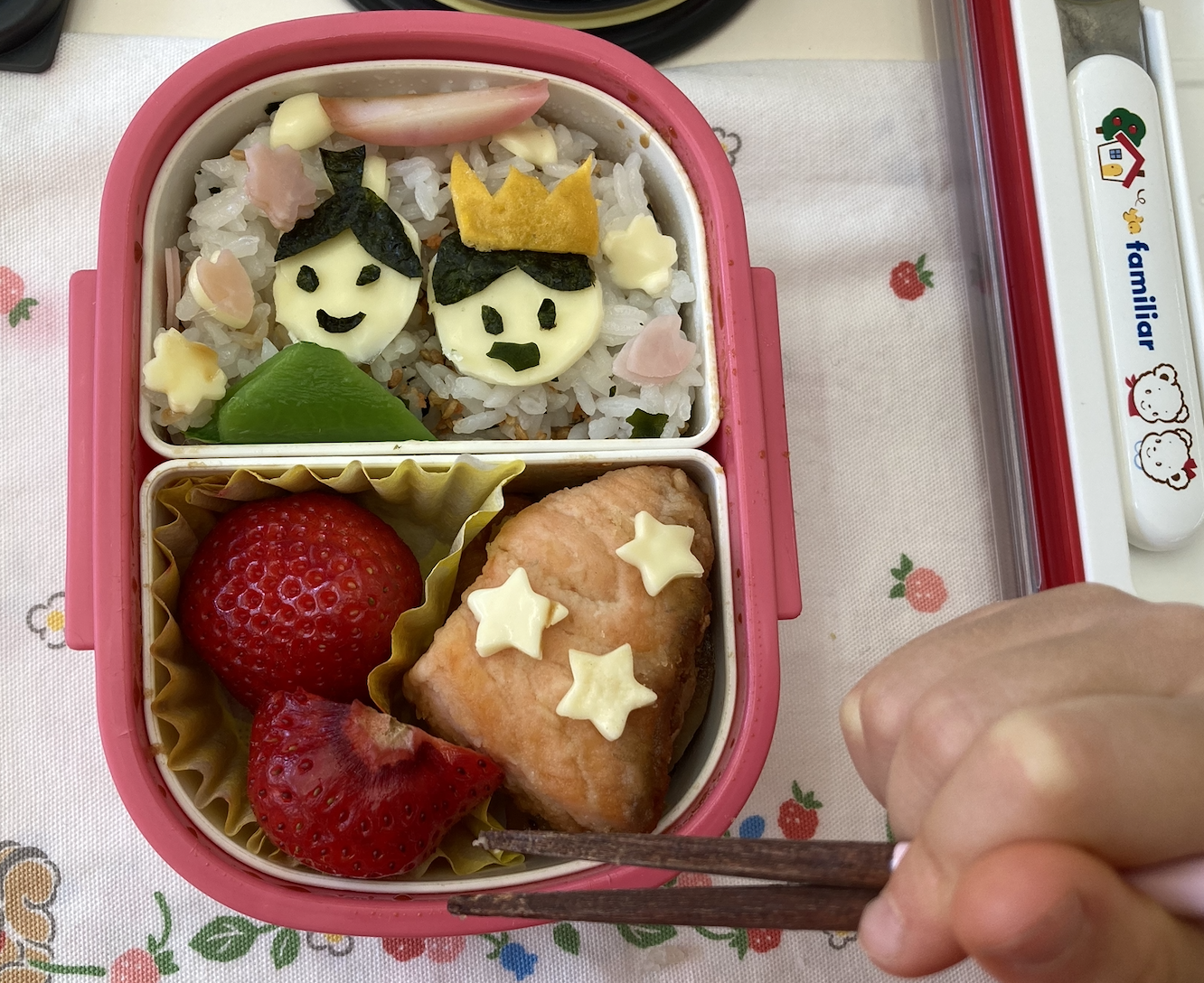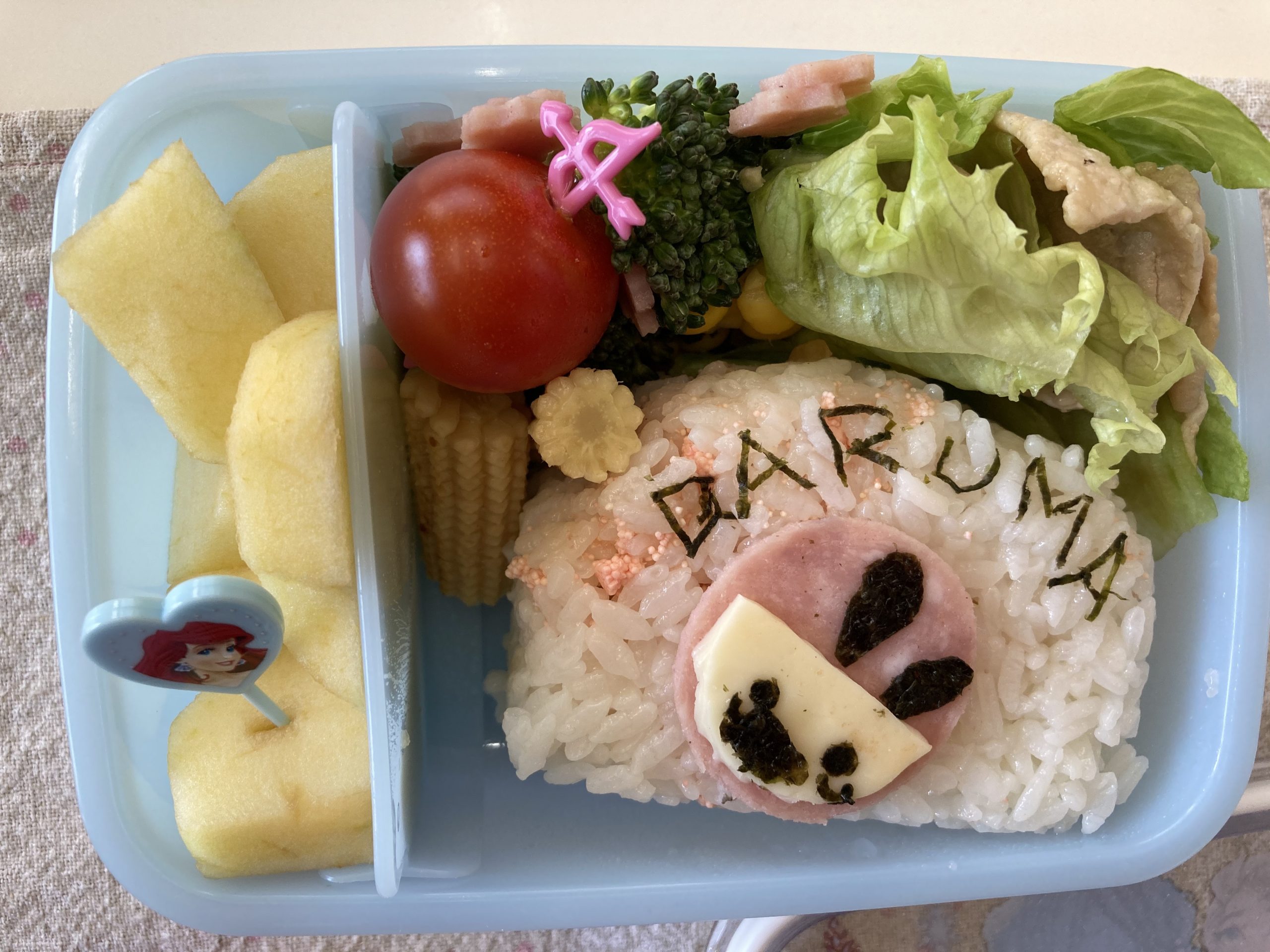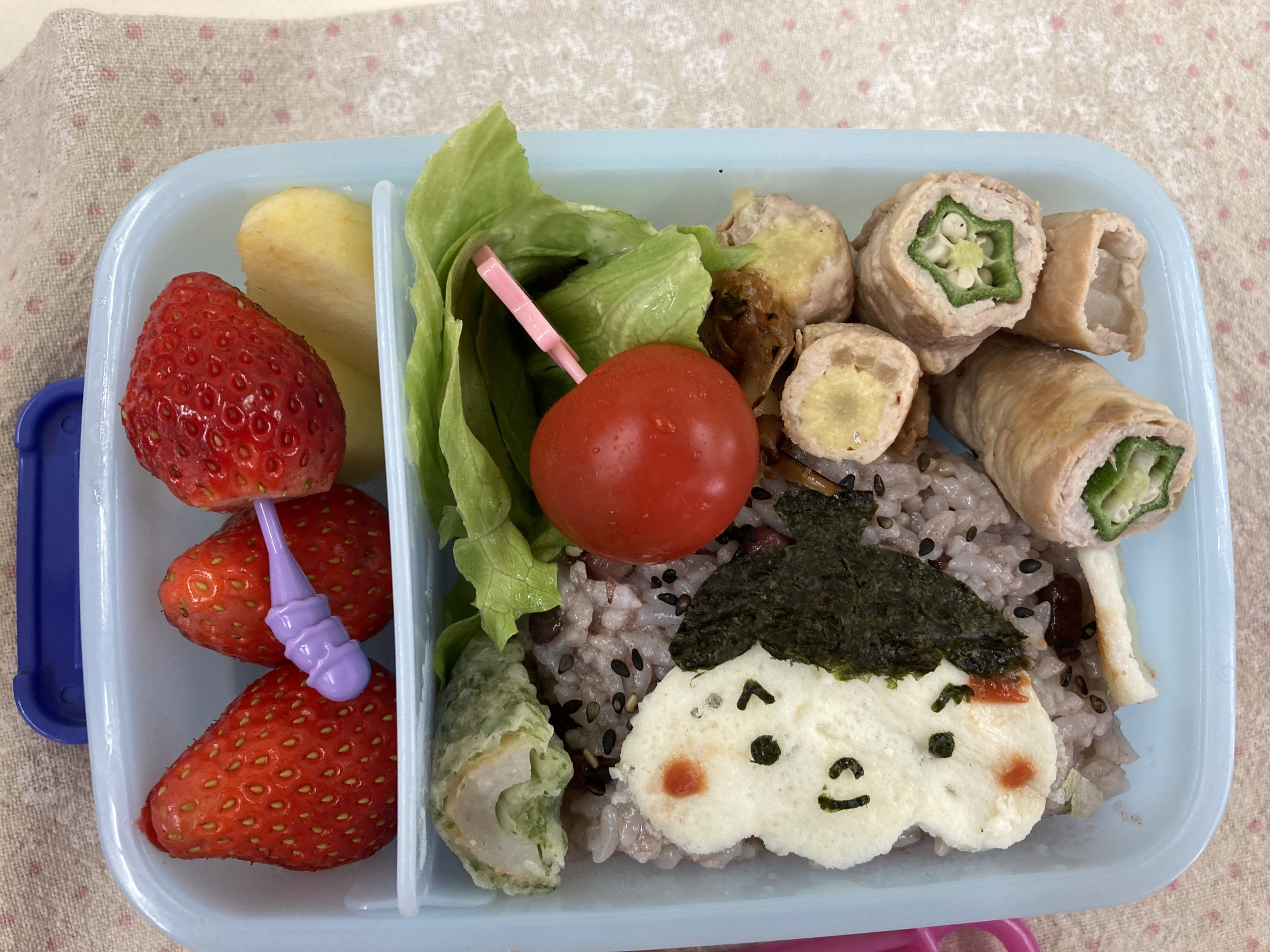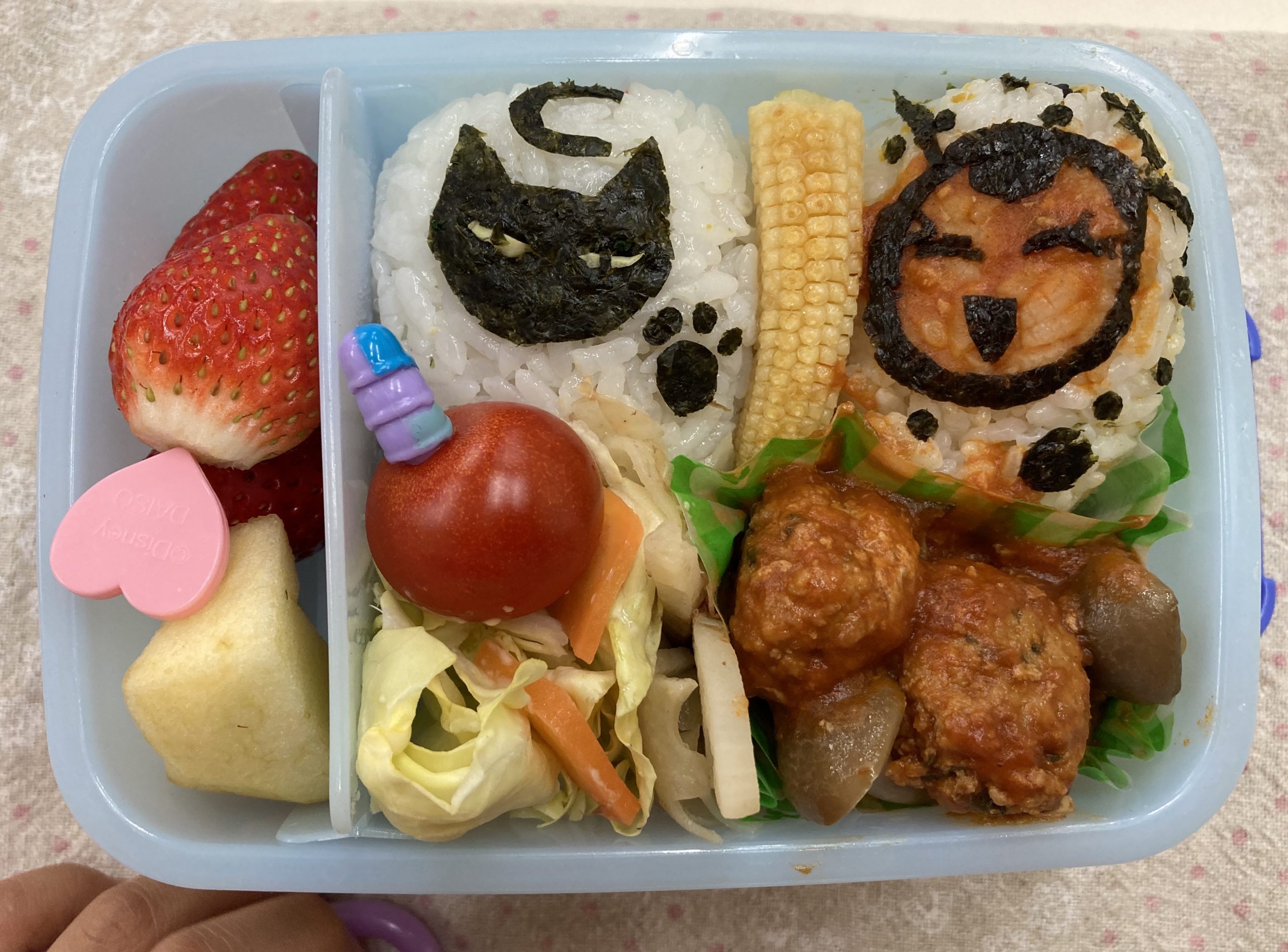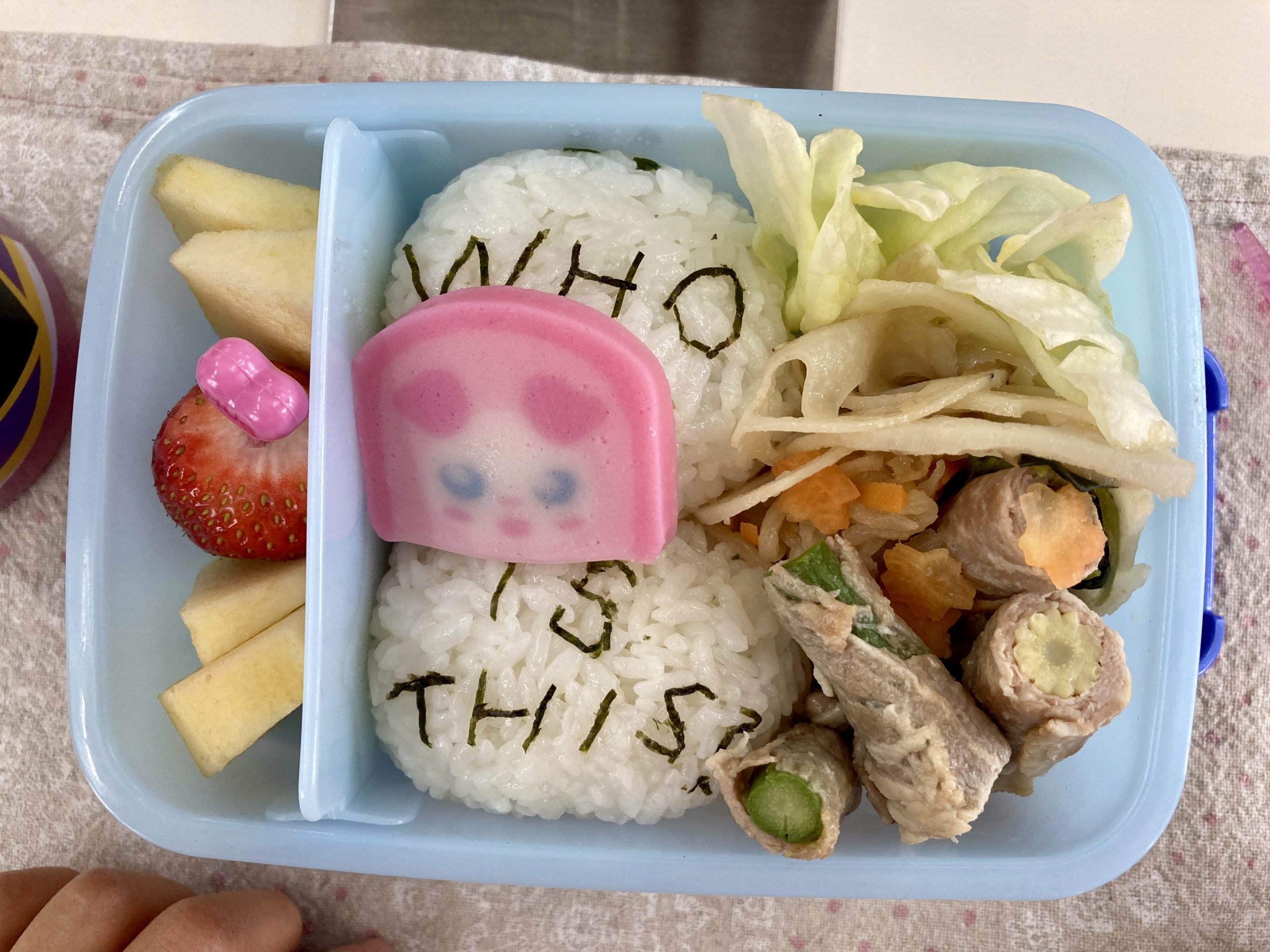While it hasn’t been so long since we had to stay online, from March to June of 2020, we are happy that this time around we are learning and discovering together in the classroom. March certainly was an active month, face-to-face.
Happy Girl’s Day, “Hinamatsuri,” March 3rd: Each child made a craft honoring the emperor and empress, using paper plates and origami paper.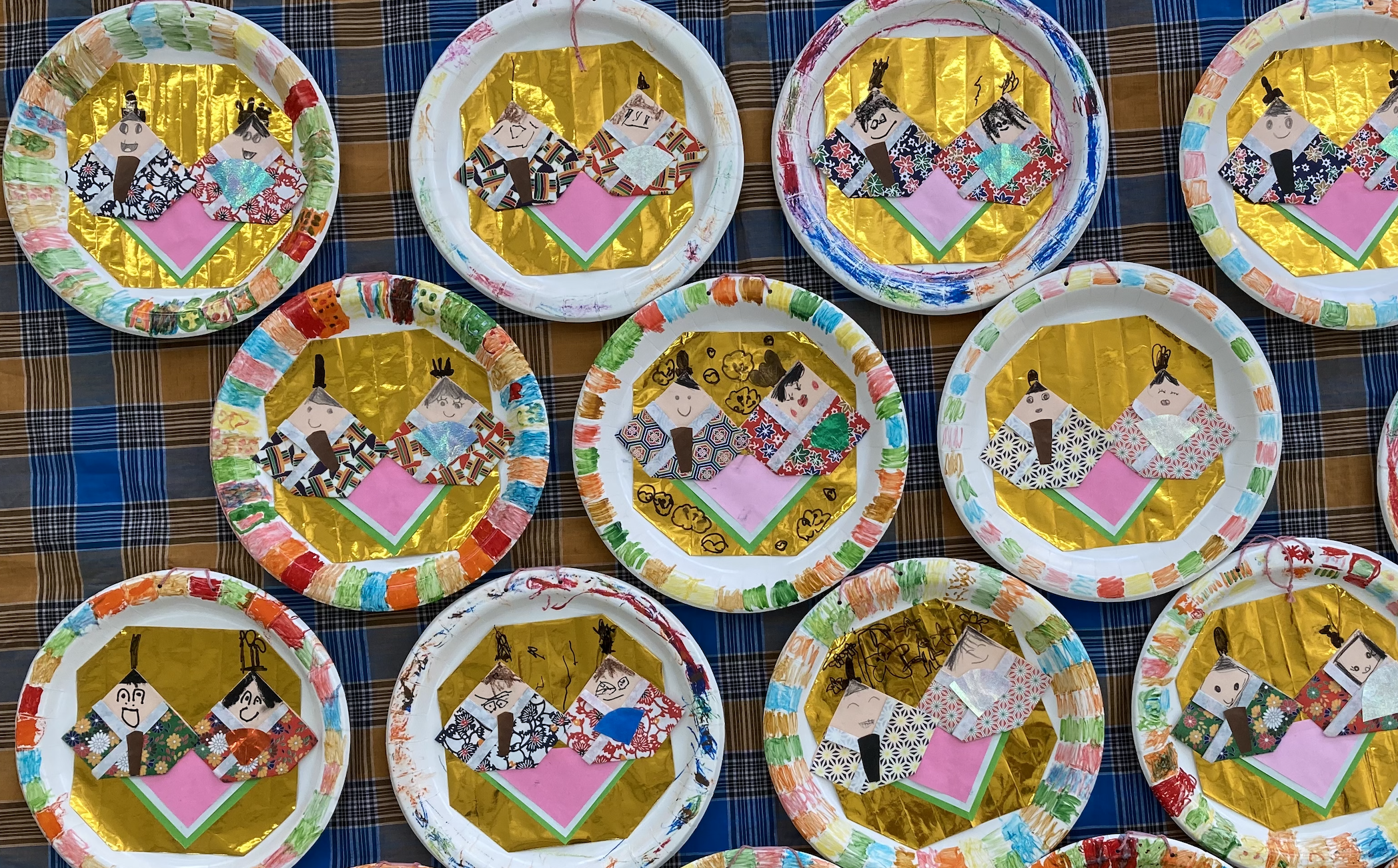
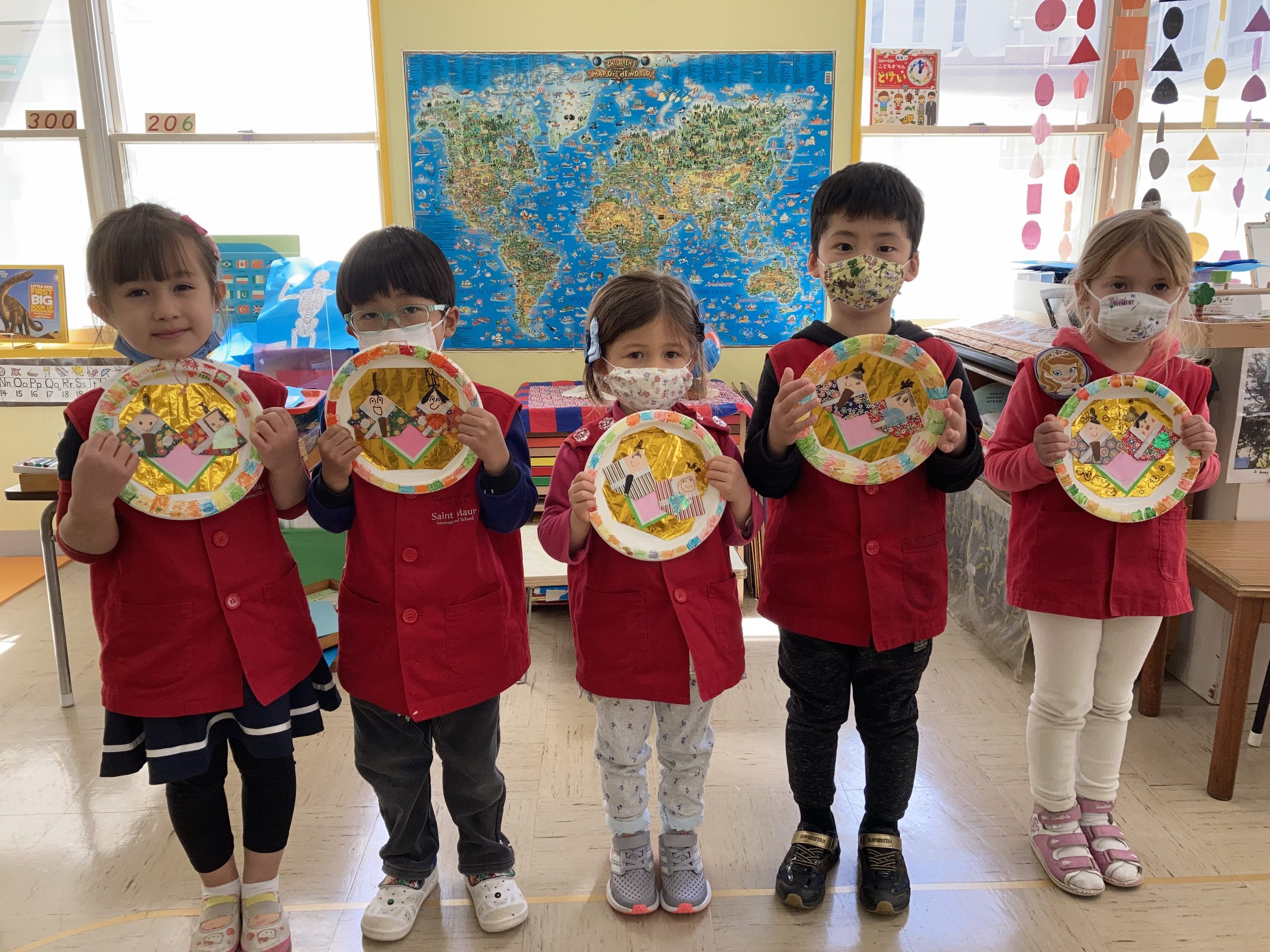
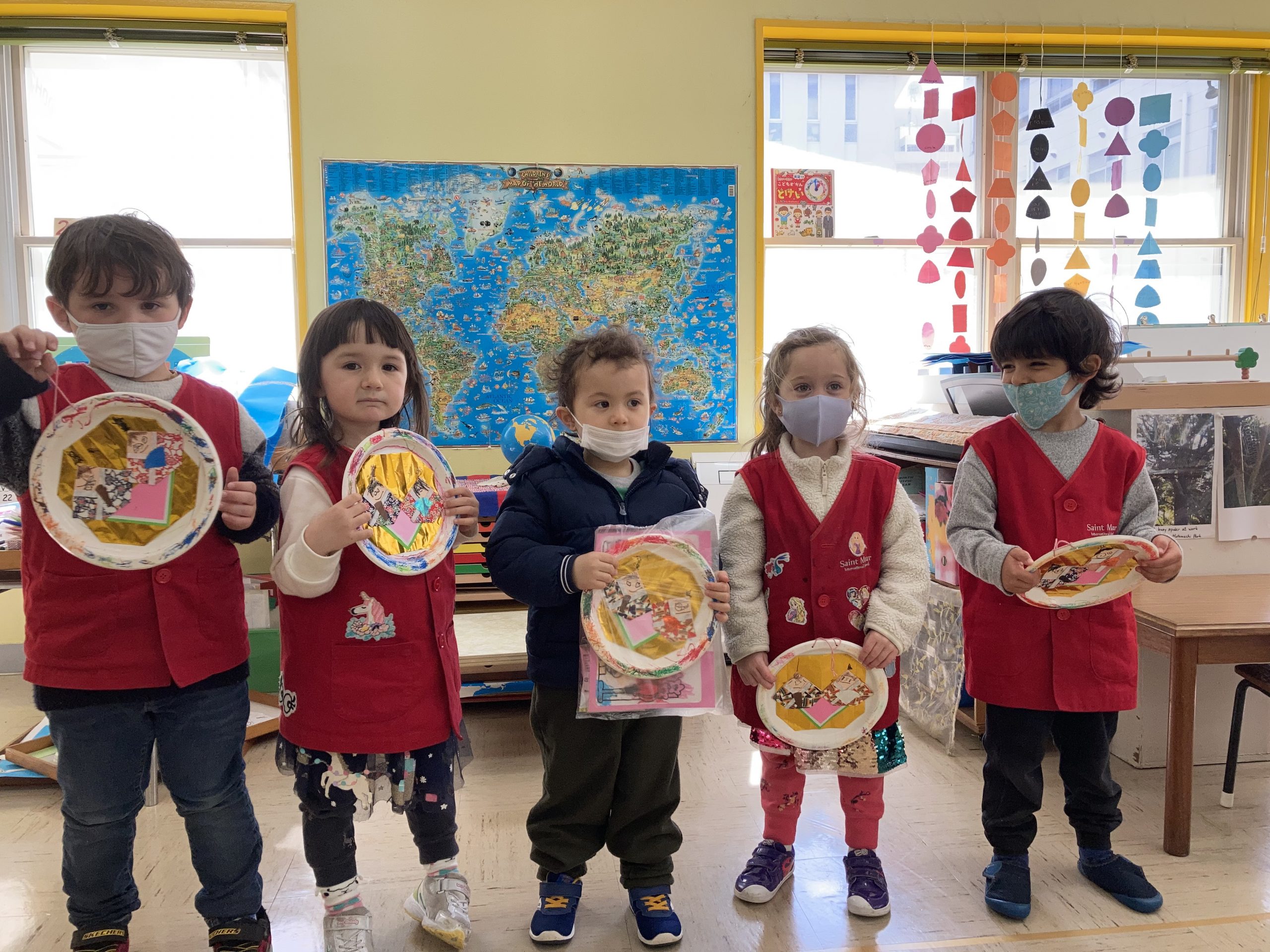
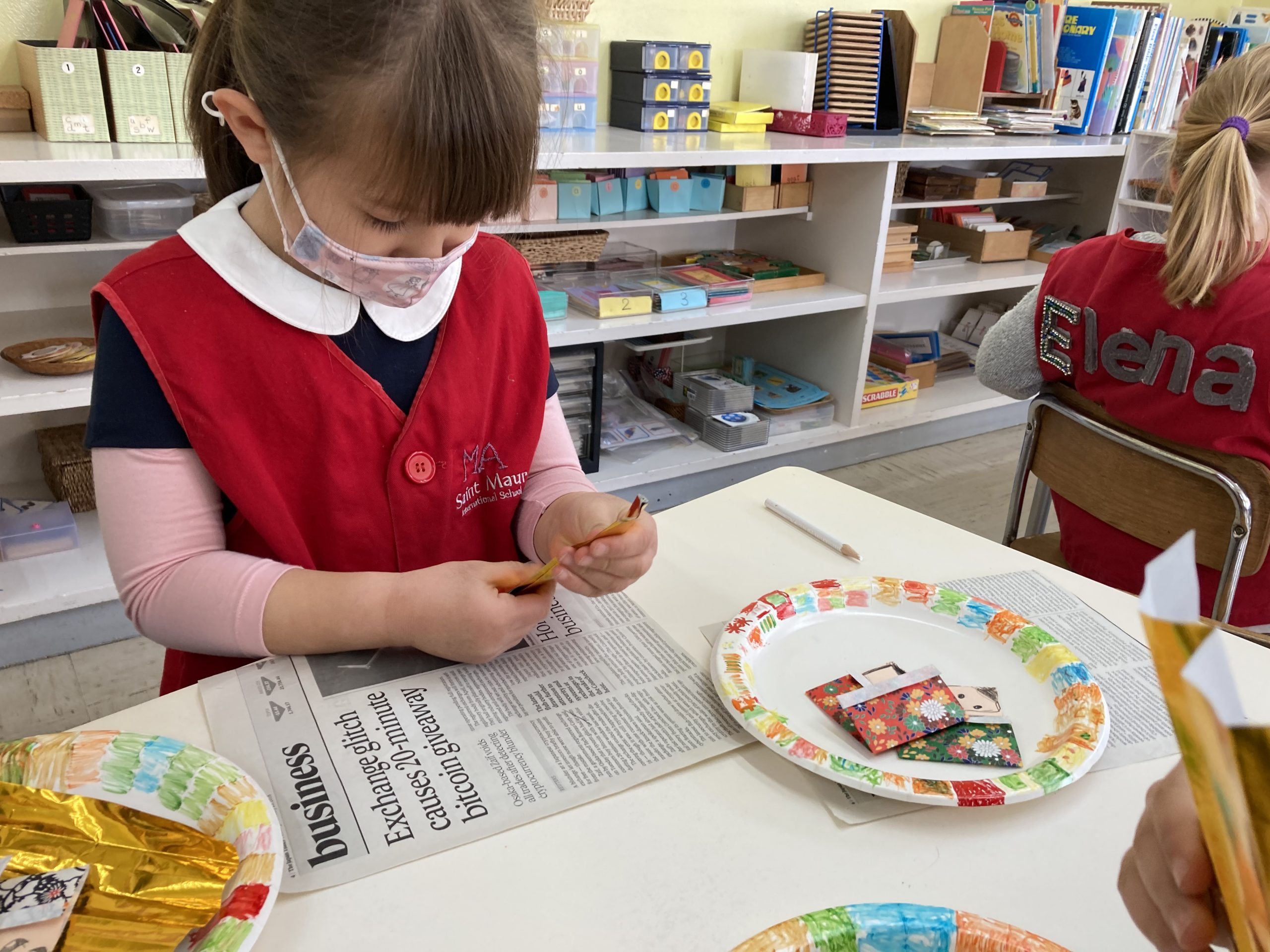
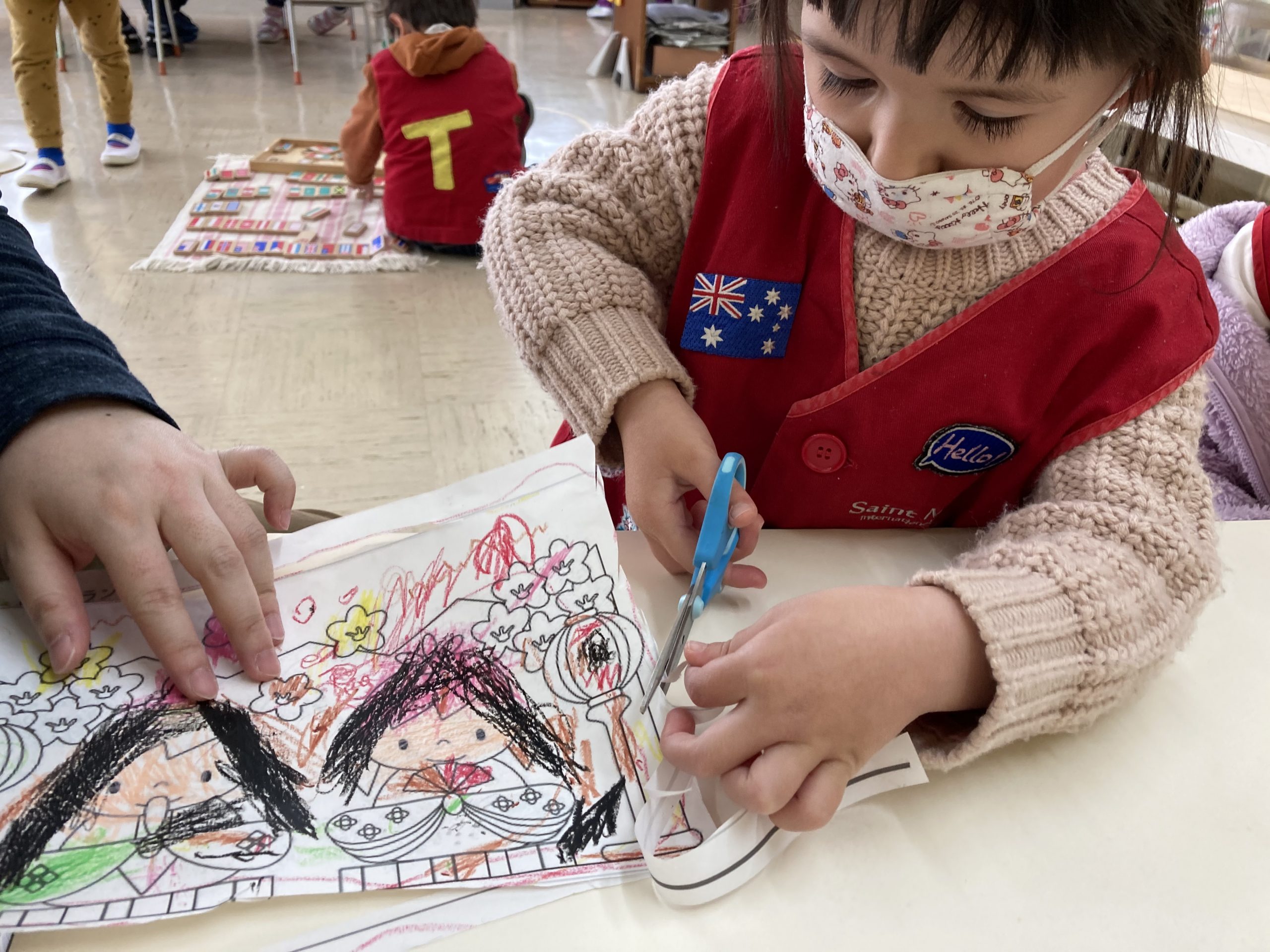 St. Patrick’s Day, March 17th: Each child made a flag of Ireland and their own rainbow headbands. Did you know that Sister Carmel, who was the headmistress of Saint Maur from 1967-1991 was sent by the Sisters of the Holy Infant Jesus to Japan from Ireland?
St. Patrick’s Day, March 17th: Each child made a flag of Ireland and their own rainbow headbands. Did you know that Sister Carmel, who was the headmistress of Saint Maur from 1967-1991 was sent by the Sisters of the Holy Infant Jesus to Japan from Ireland?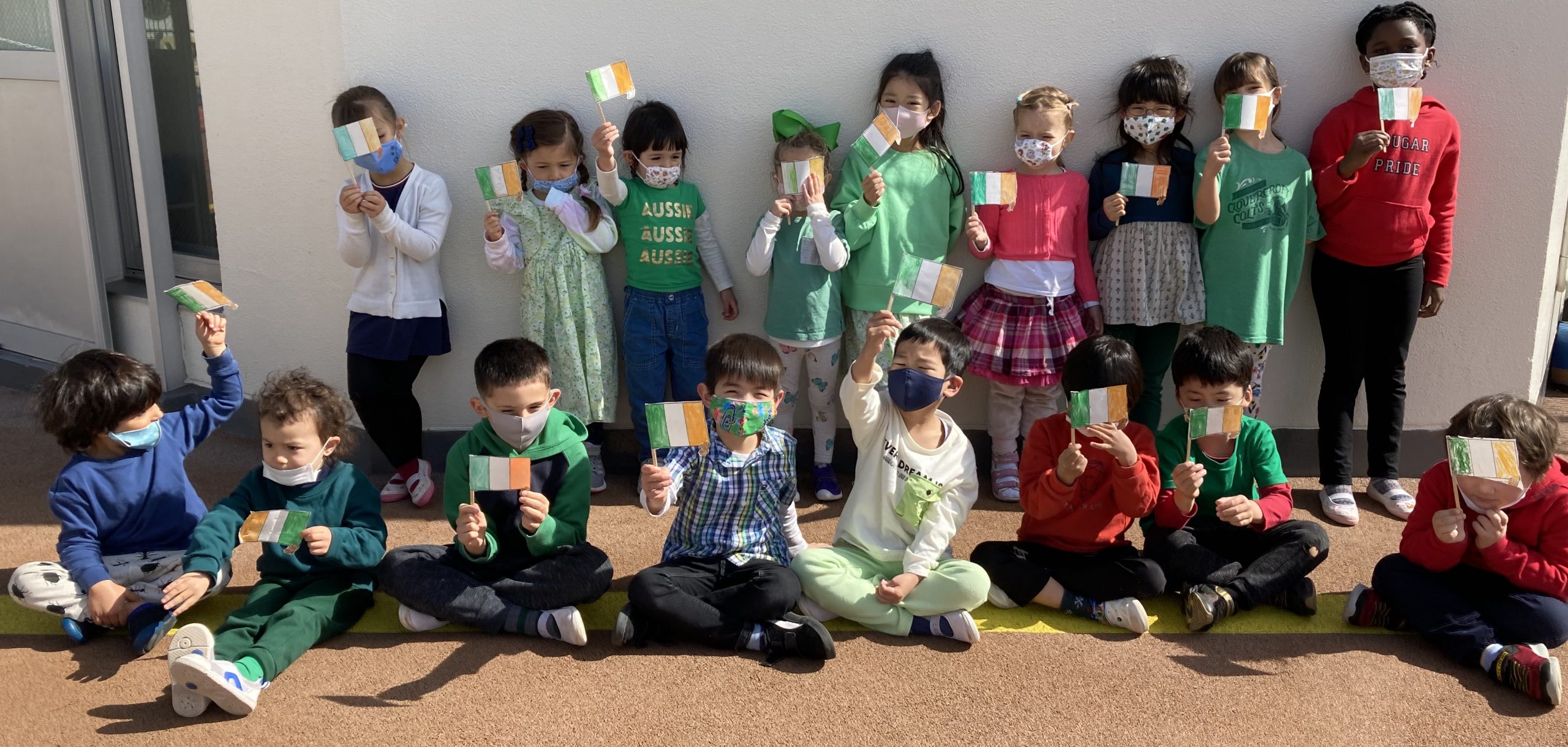
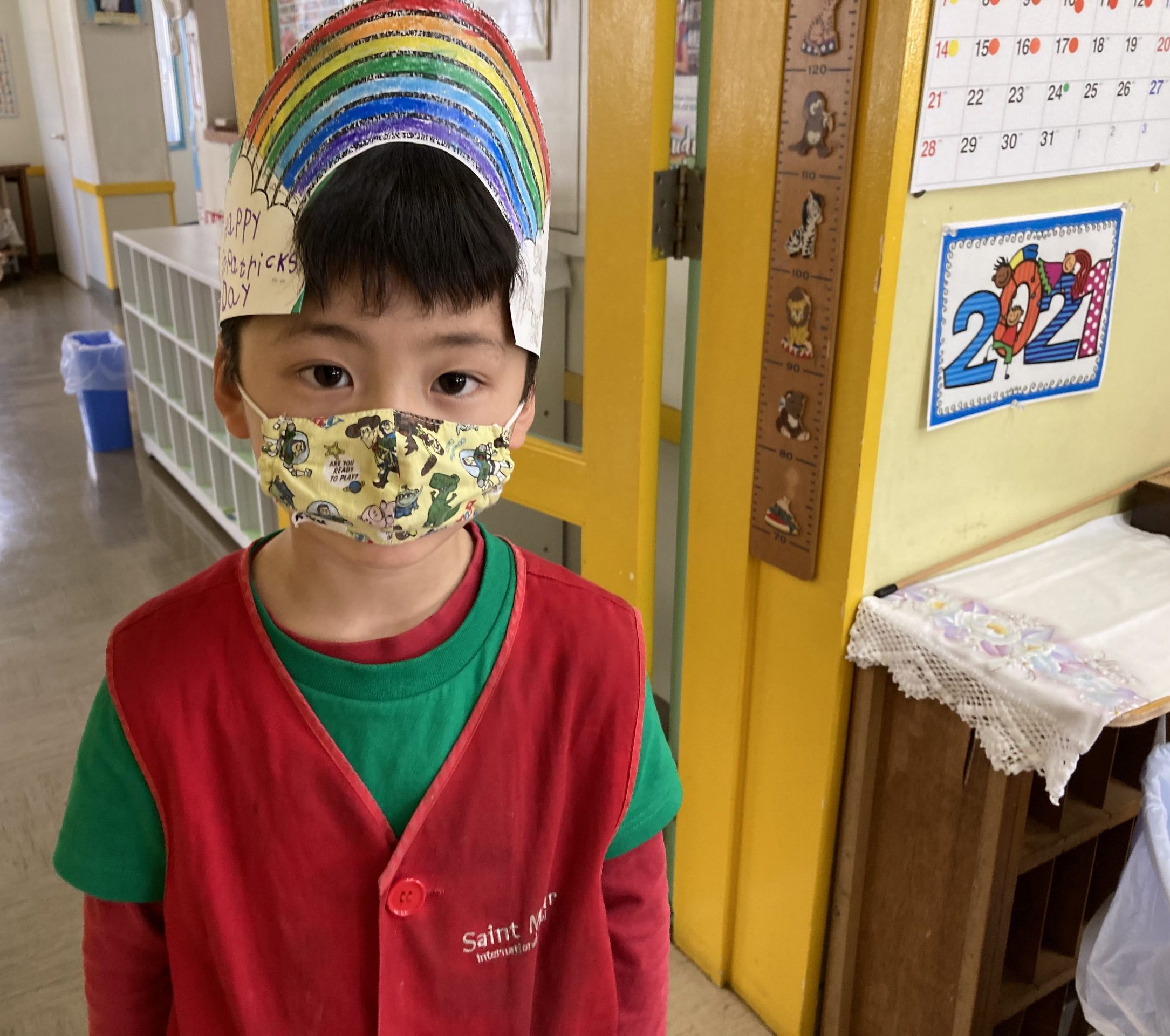
We learned the colors of the rainbow: red, orange, yellow, green, blue, indigo, and violet. Japanese Culture Week, March 22nd-26th: The five weekdays were dedicated to learning more about Japan, the country we all reside in. In following the strict rules for containment of Covid-19, our parents volunteered to make presentations on Japanese-related cultural activities by making original short videos that the children could watch in the classroom, offering them a new way of learning. We are grateful to the moms and dads, grandma, and middle school and high school siblings who participated.
Japanese Culture Week, March 22nd-26th: The five weekdays were dedicated to learning more about Japan, the country we all reside in. In following the strict rules for containment of Covid-19, our parents volunteered to make presentations on Japanese-related cultural activities by making original short videos that the children could watch in the classroom, offering them a new way of learning. We are grateful to the moms and dads, grandma, and middle school and high school siblings who participated.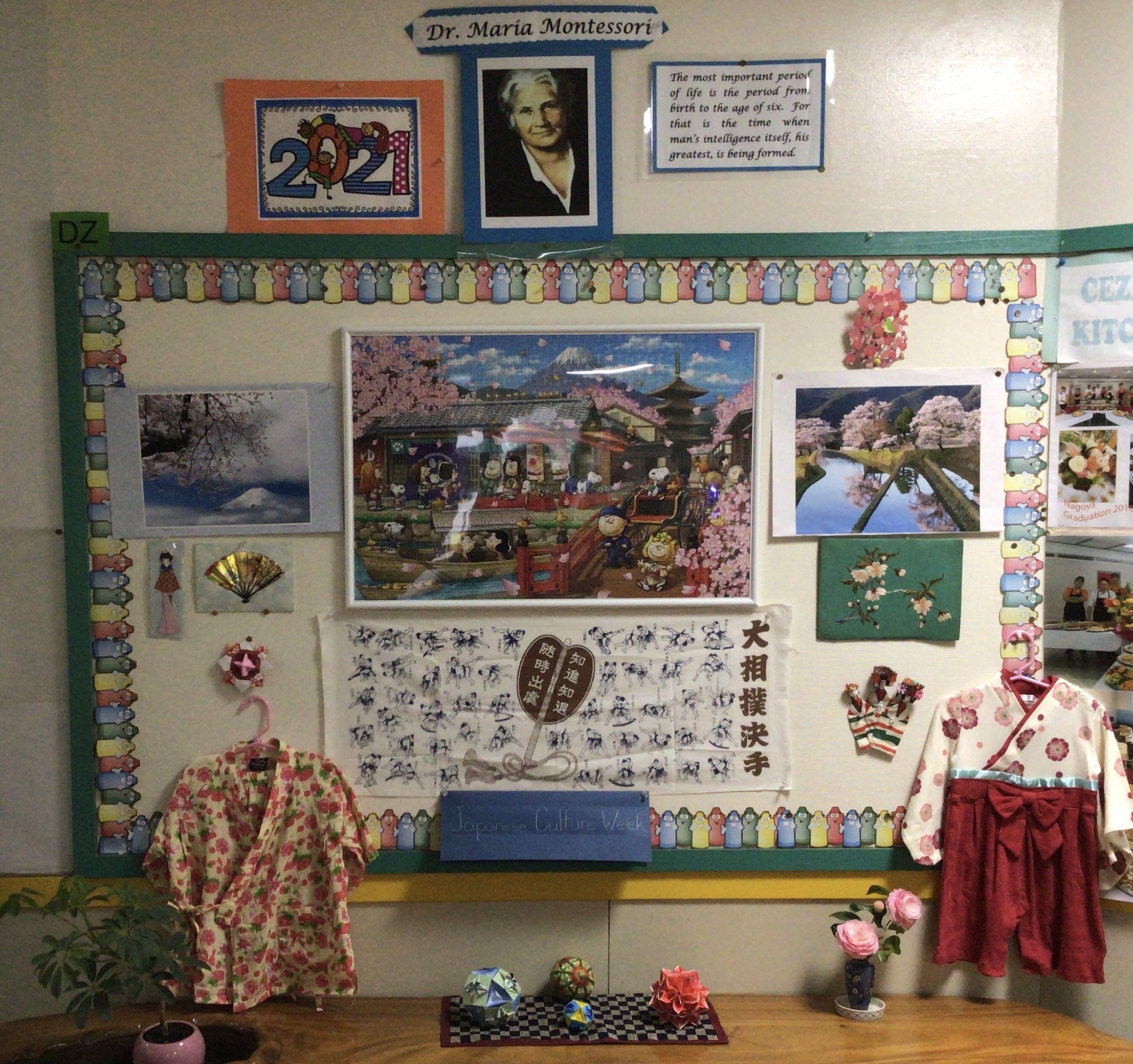
“How to make Dorayaki”: by Reyna’s parents. They even arranged for this Japanese confectionery to be taken home by each child.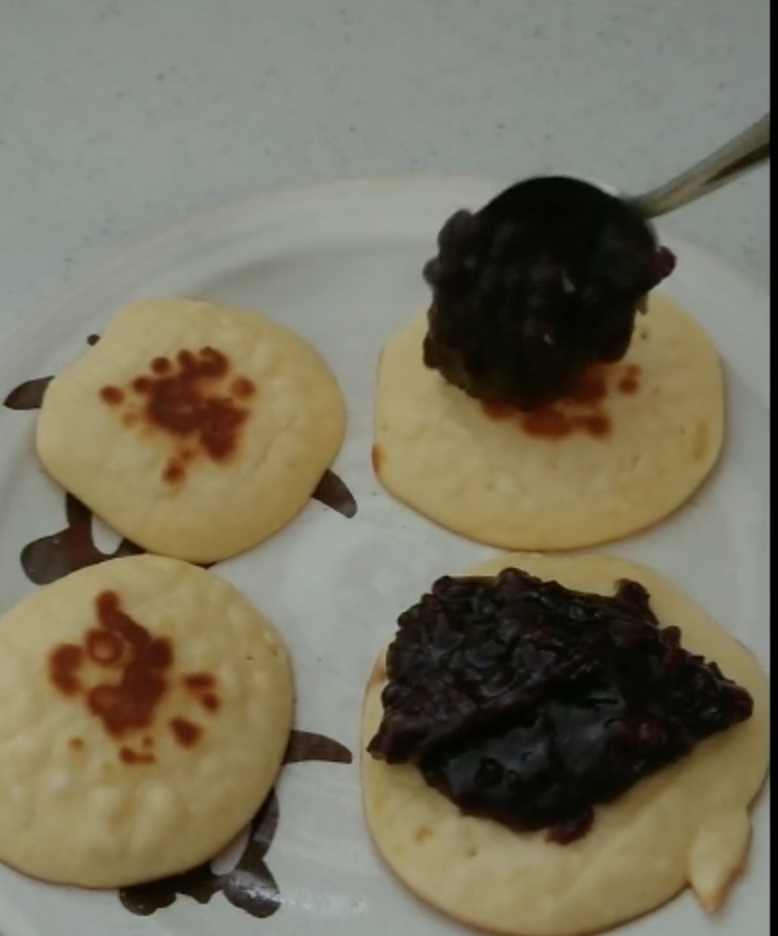
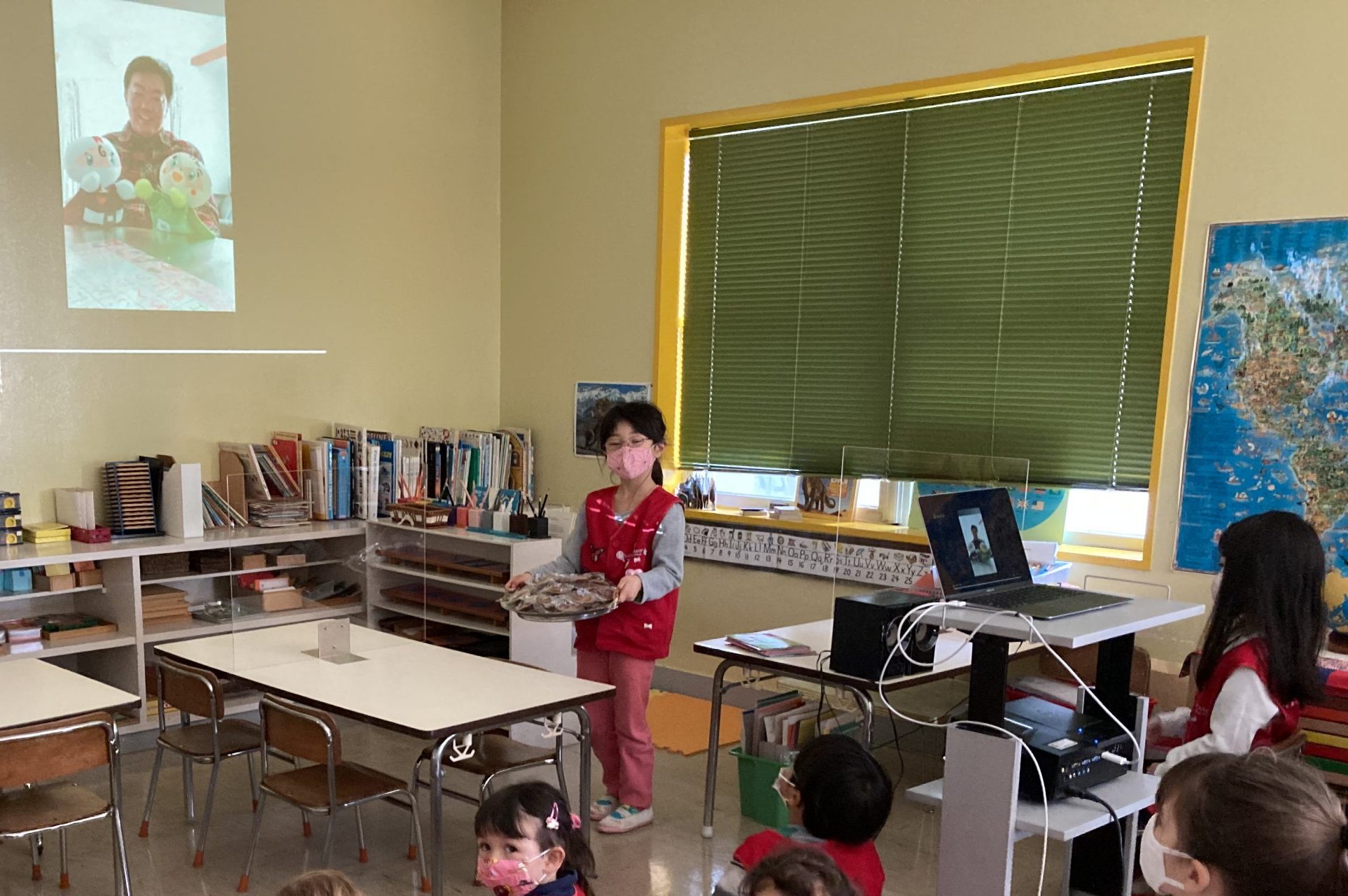
“Haruga kita”: by Landon’s mom, a songwriter in her own right, who explained, sang, and taught us this traditional spring tune.
.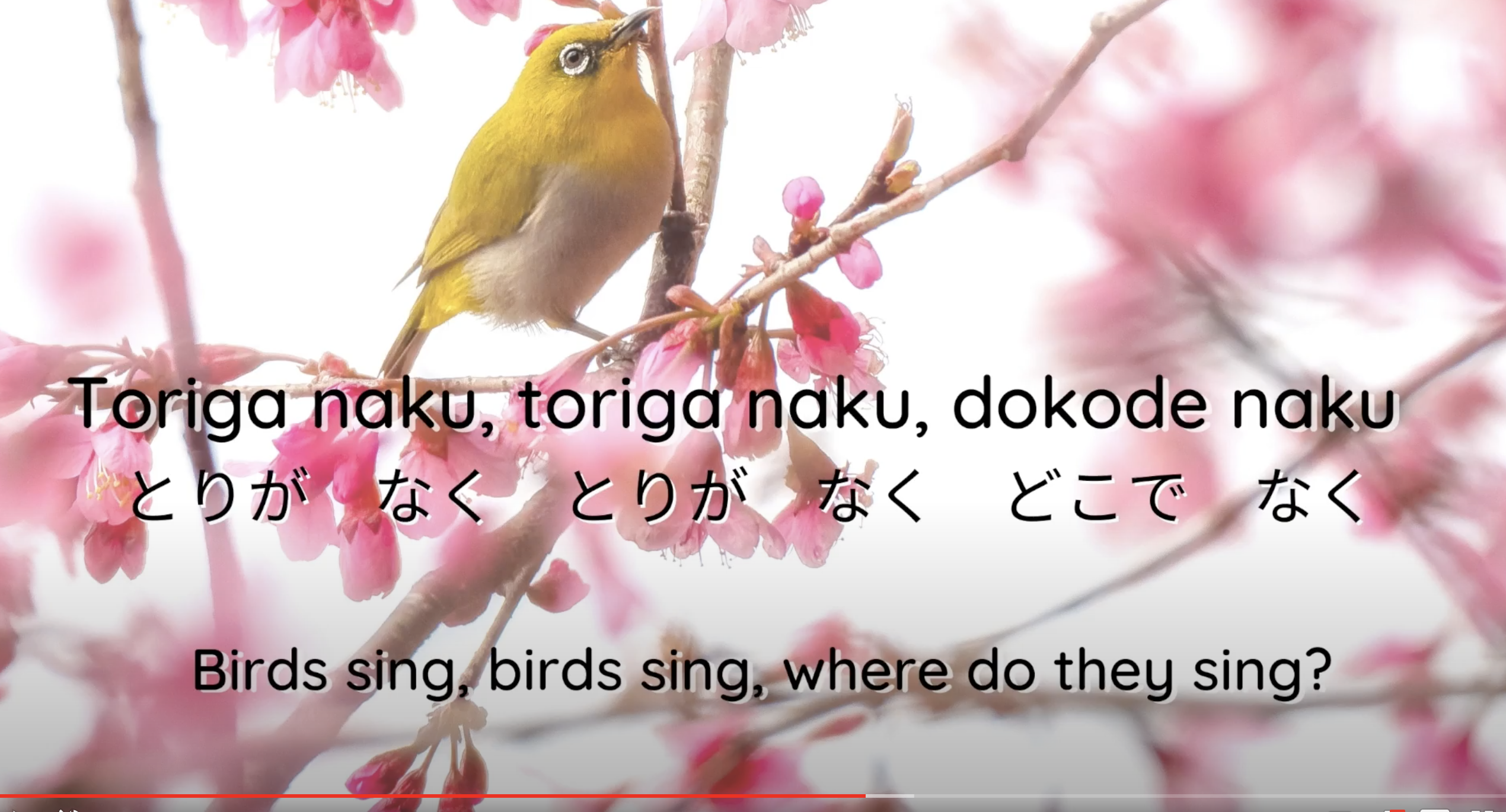
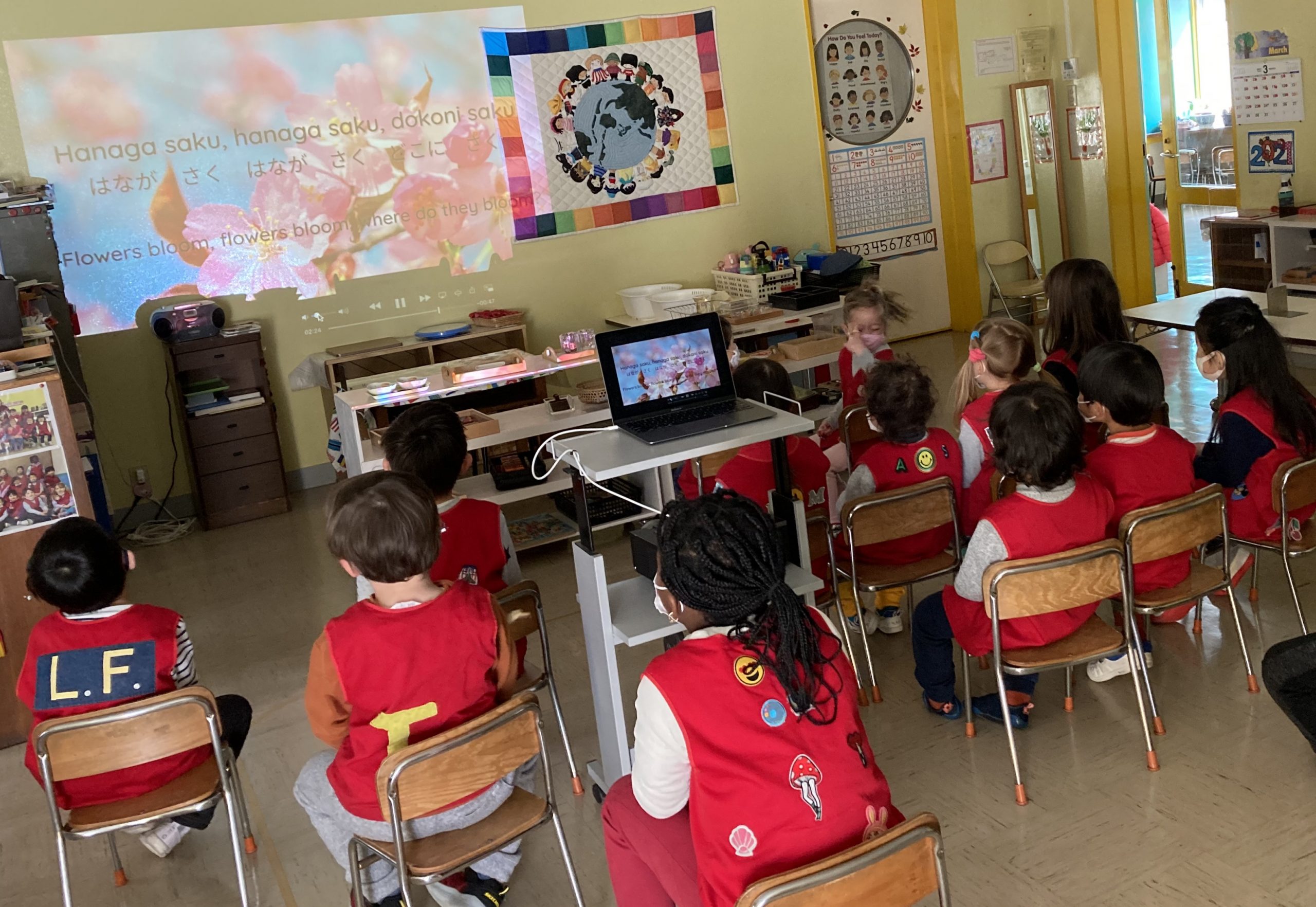 “How to write Japanese characters”: by a professional calligrapher, Leo’s grandma, using brush and ink.
“How to write Japanese characters”: by a professional calligrapher, Leo’s grandma, using brush and ink.
.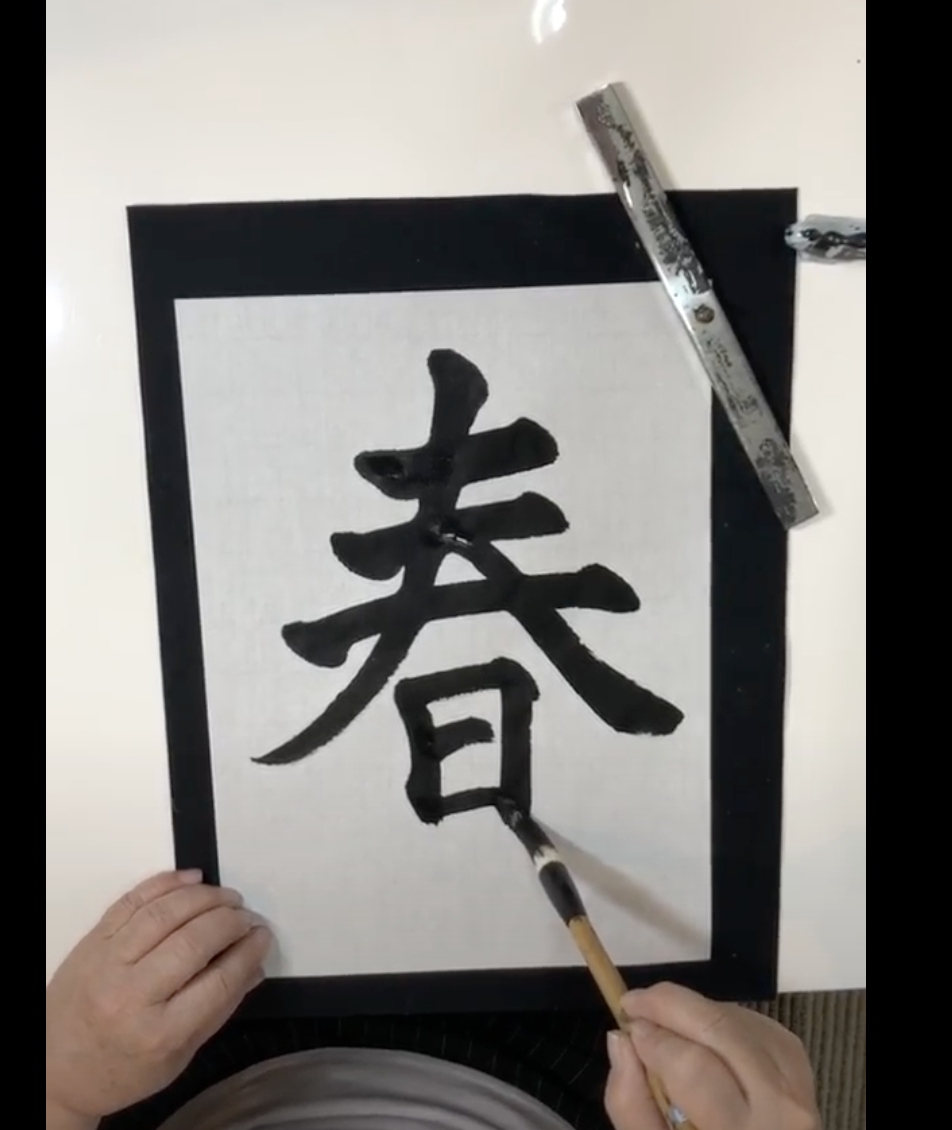
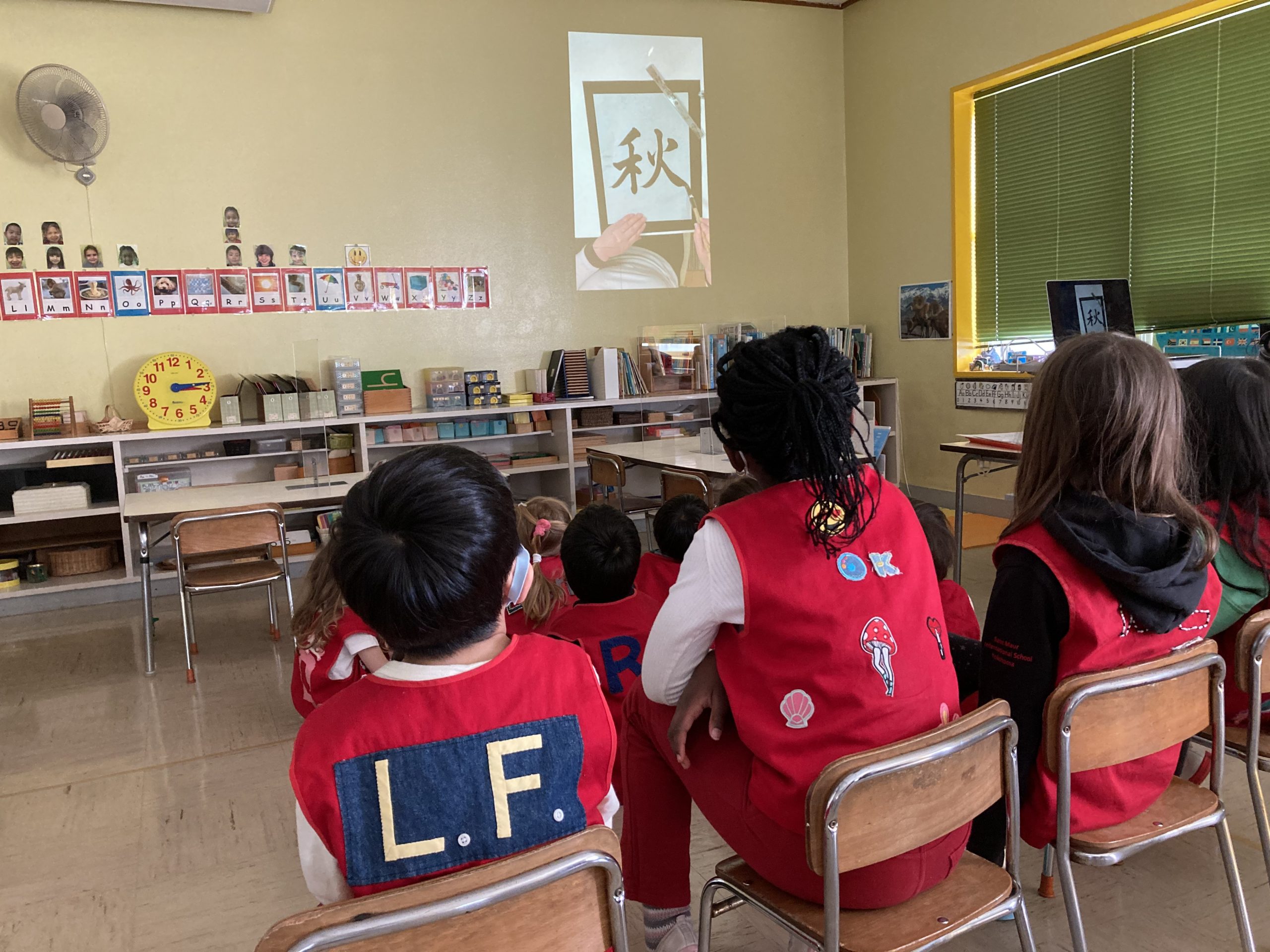 “Japanese national anthem“: by Michiko’s dad, who taught us the words and the meaning of the lyrics.
“Japanese national anthem“: by Michiko’s dad, who taught us the words and the meaning of the lyrics.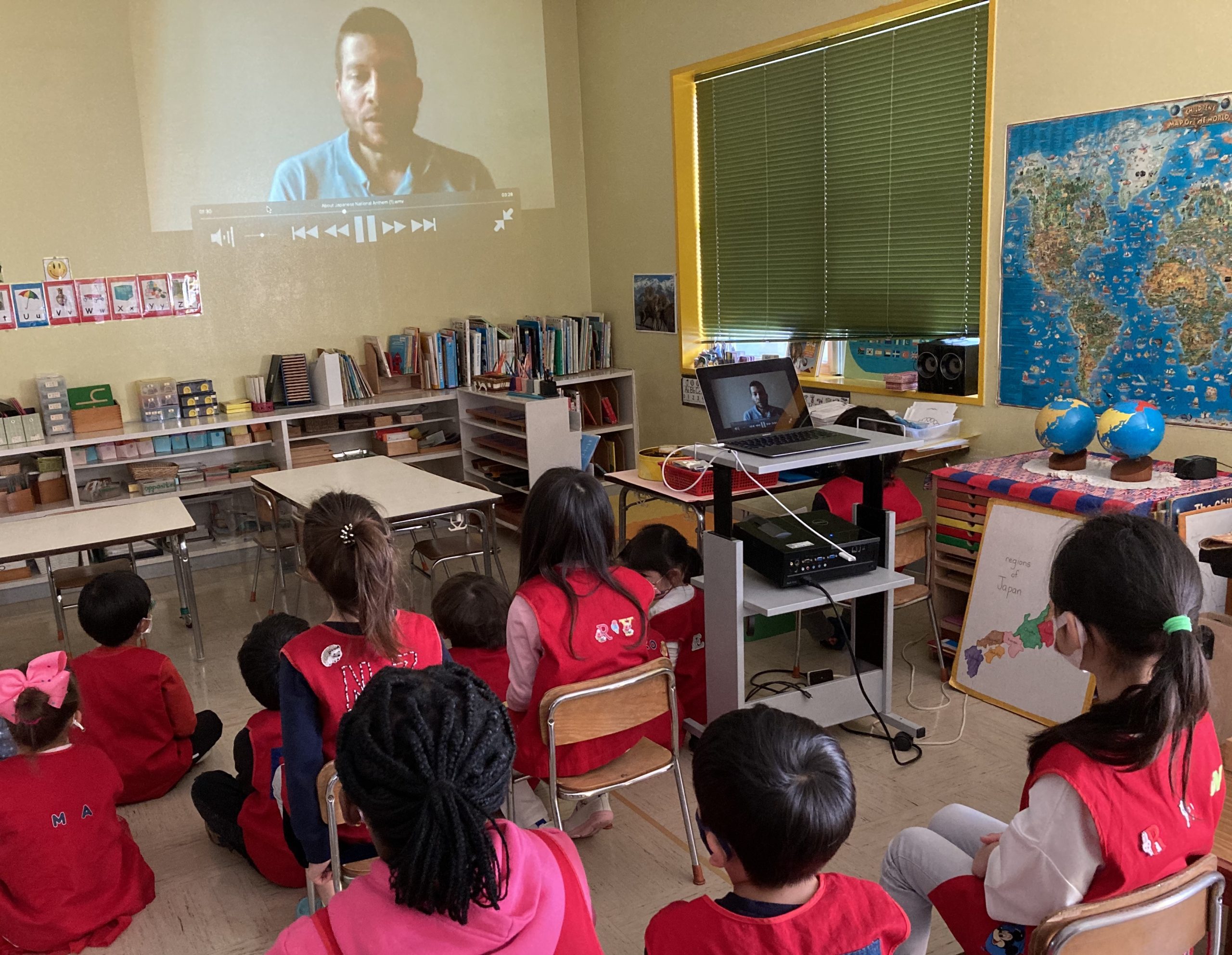
“How to play Ken-dama“: by Ran’s high school sister, who let us play with her wooden ken-dama.
.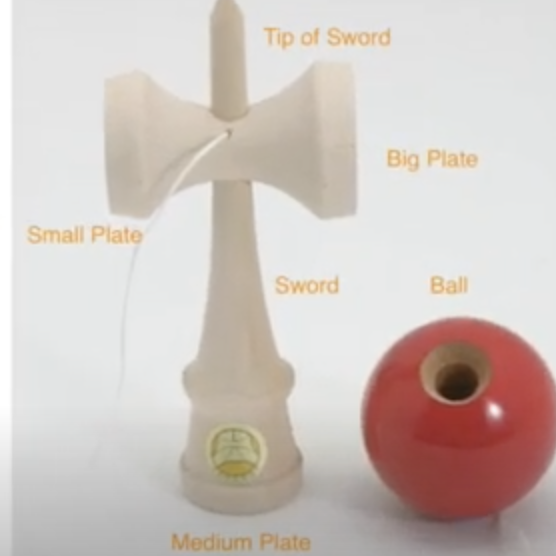
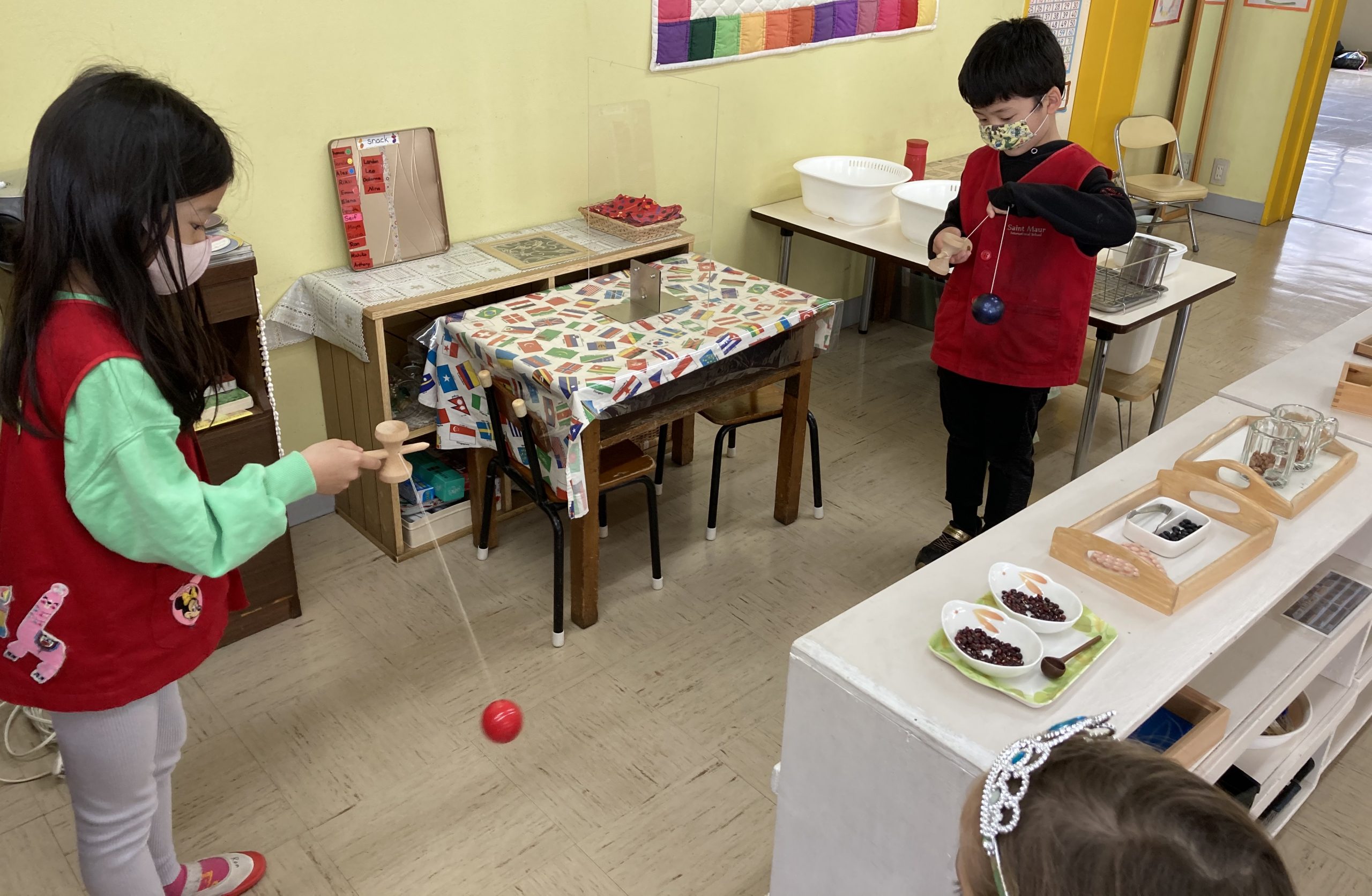 During the week, we also played with classic Japanese toys, such as Koma (Japanese top), Otedama (juggling bean bags), Take-tombo (bamboo copter).
During the week, we also played with classic Japanese toys, such as Koma (Japanese top), Otedama (juggling bean bags), Take-tombo (bamboo copter).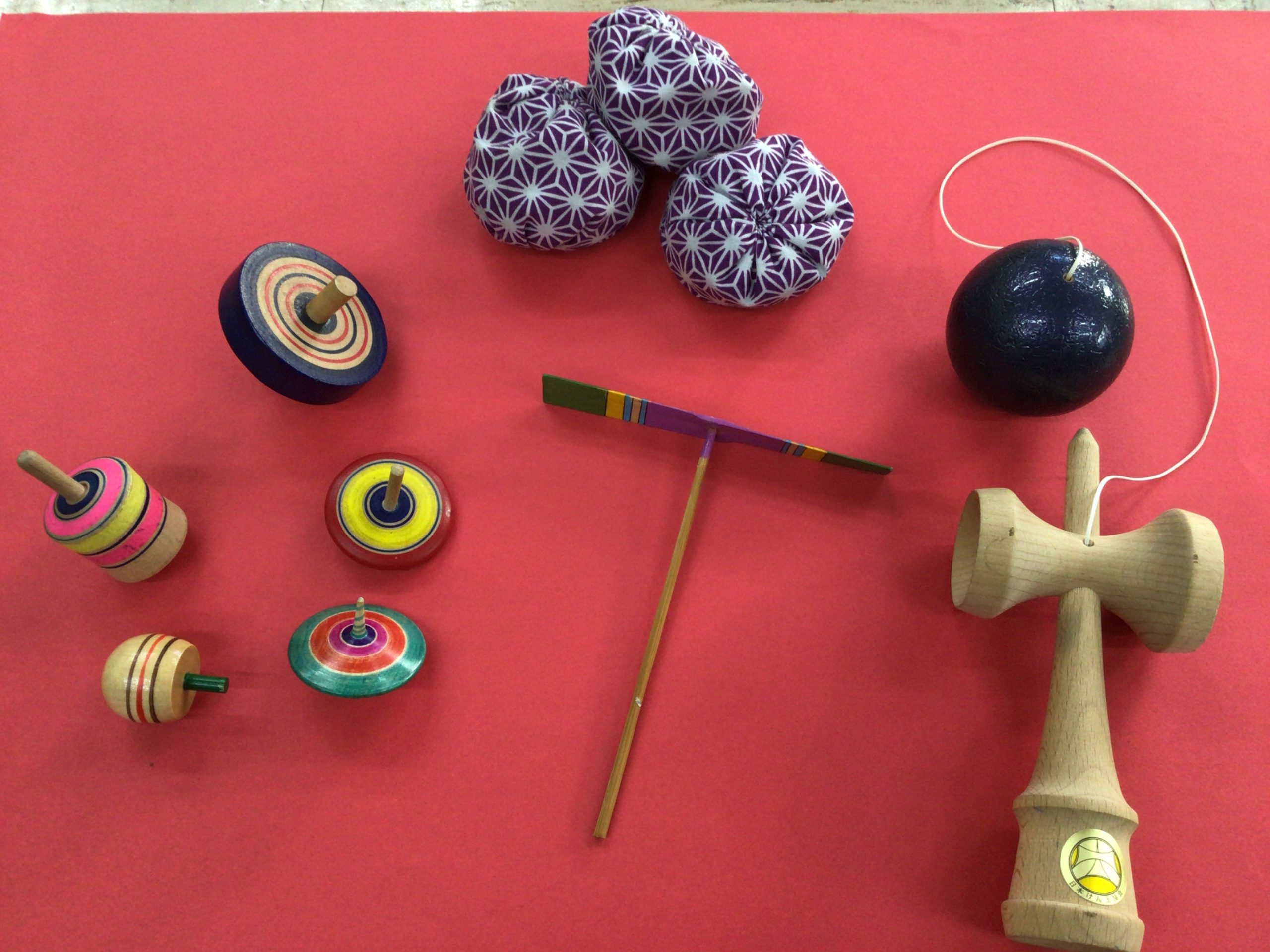
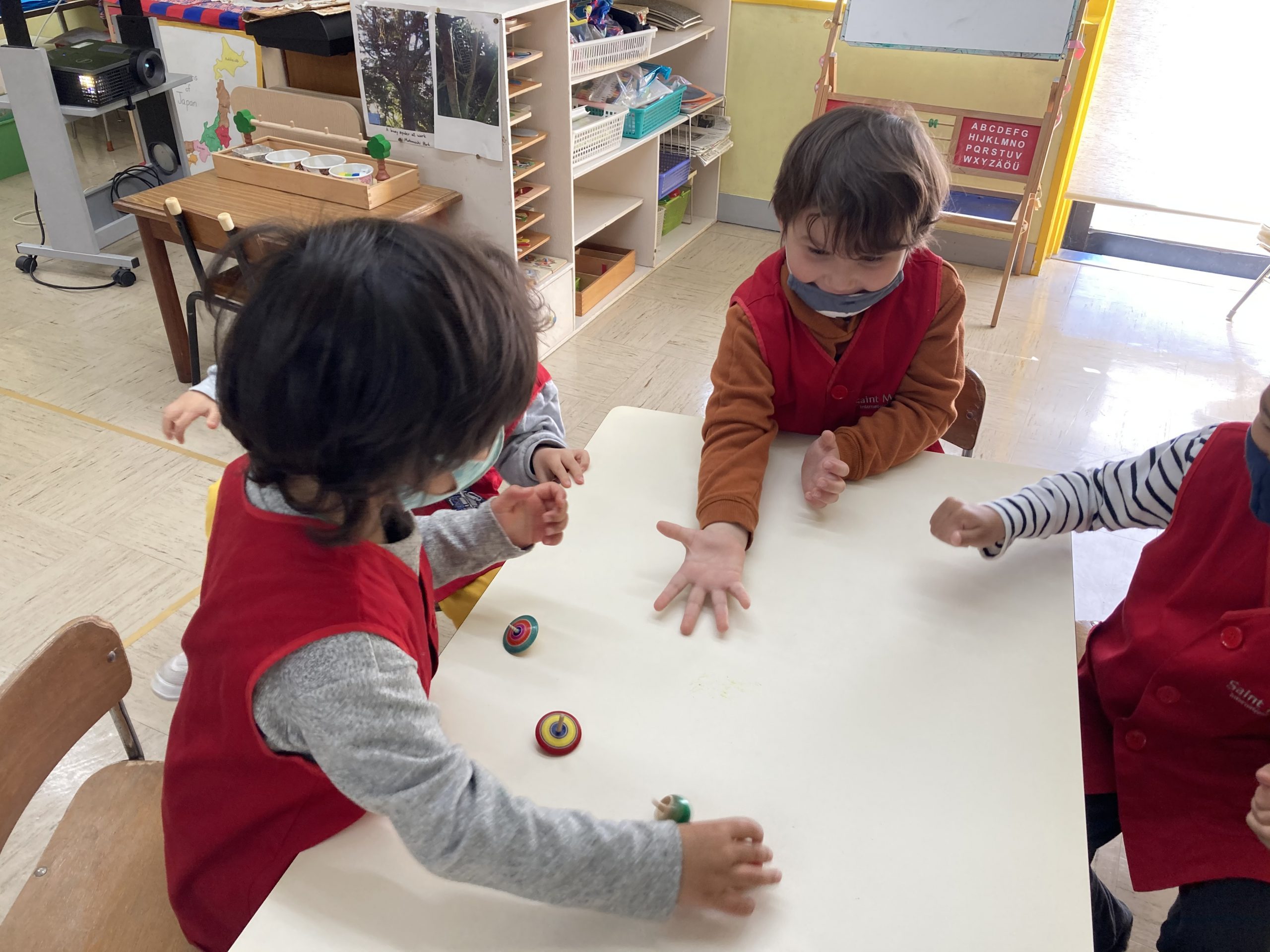
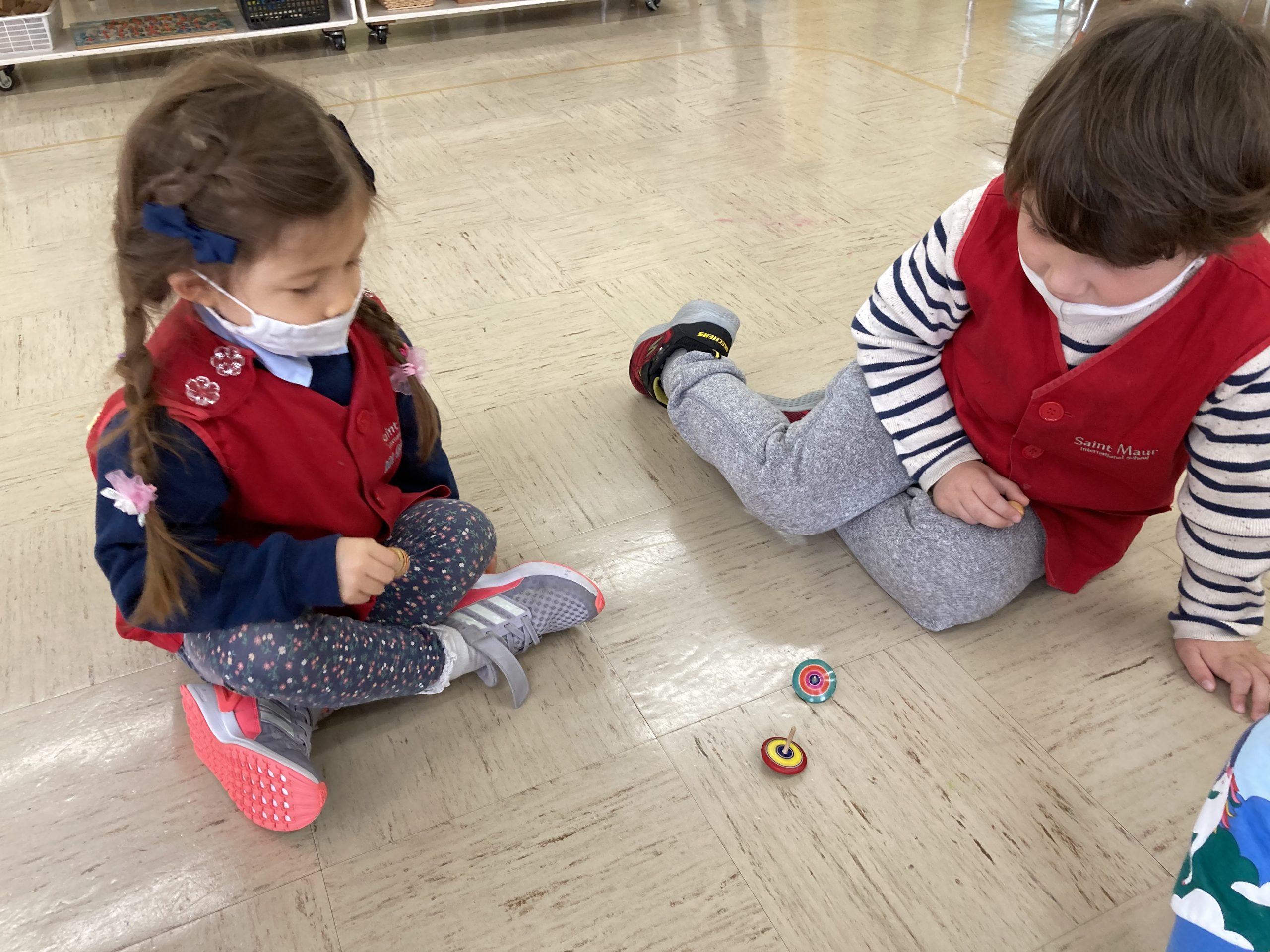 Mid-week, we had four middle school students (two were in Ms. Mimi’s class when they were in Montessori) come to the Upper Rec Hall and teach us the dance called “Make You Happy”, one of the dance songs that were used in the school-wide Japanese Day videos.
Mid-week, we had four middle school students (two were in Ms. Mimi’s class when they were in Montessori) come to the Upper Rec Hall and teach us the dance called “Make You Happy”, one of the dance songs that were used in the school-wide Japanese Day videos.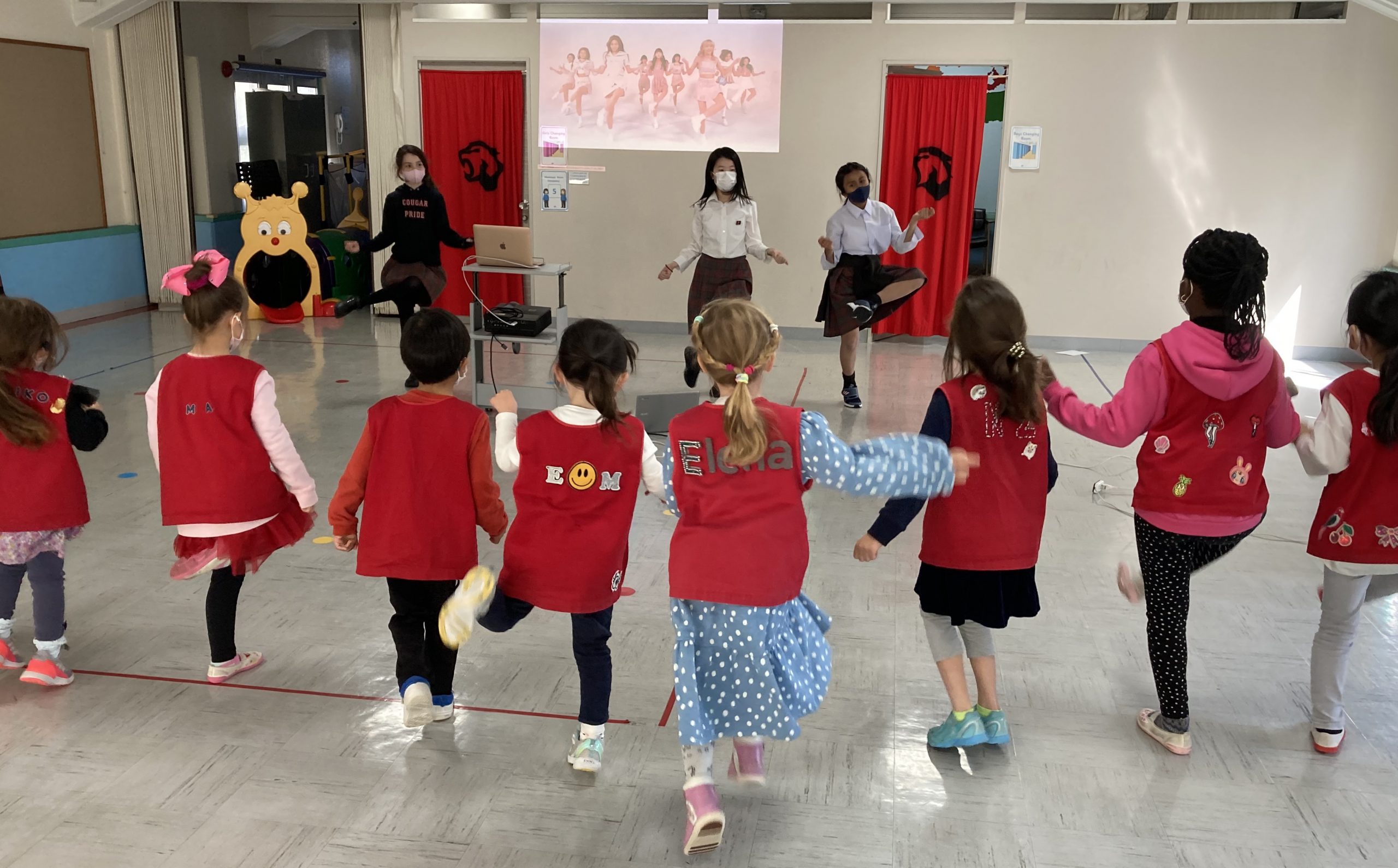
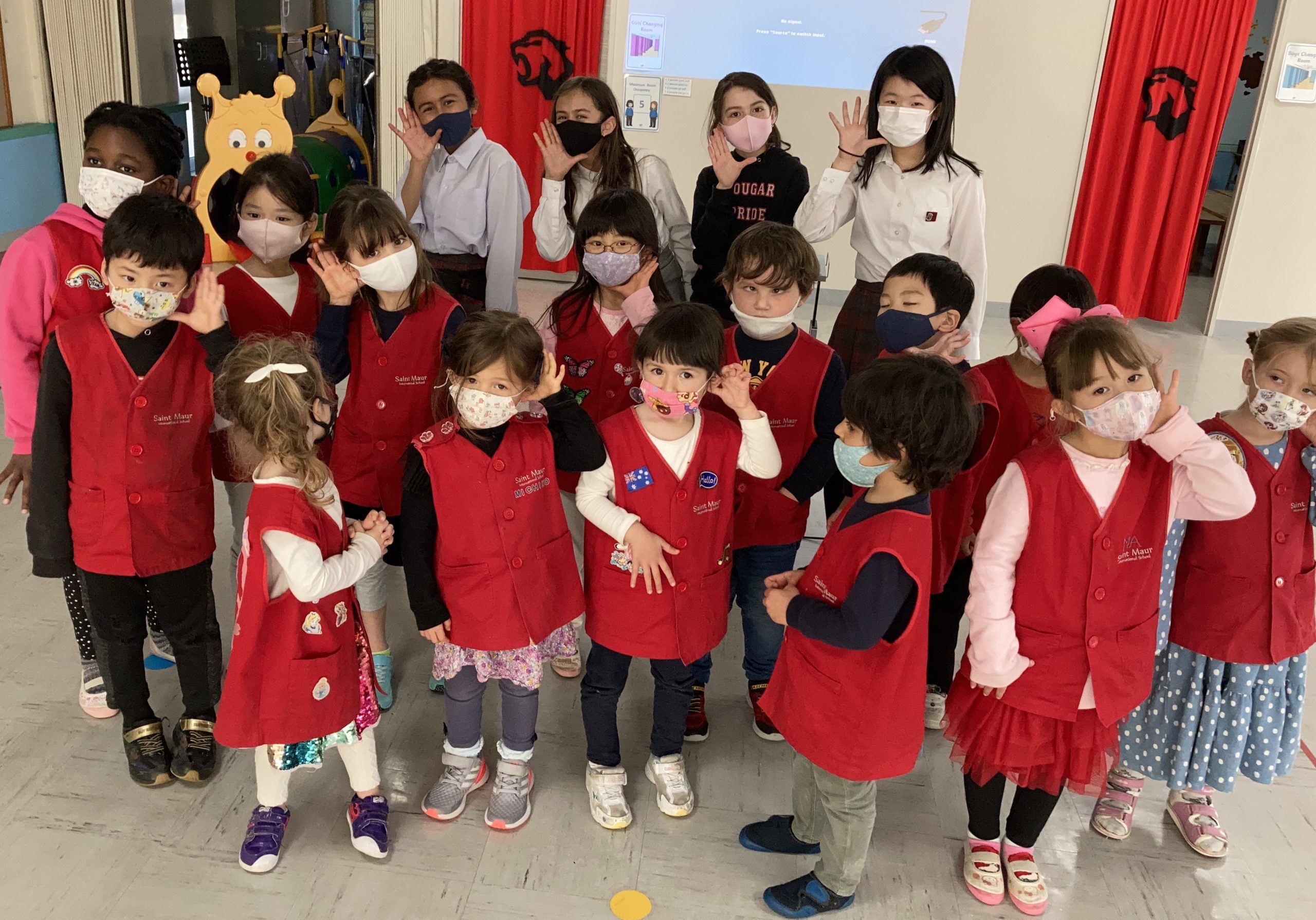
“Introduction to Yokai”: by Riku’s dad, on interesting Japanese monsters and goblins.
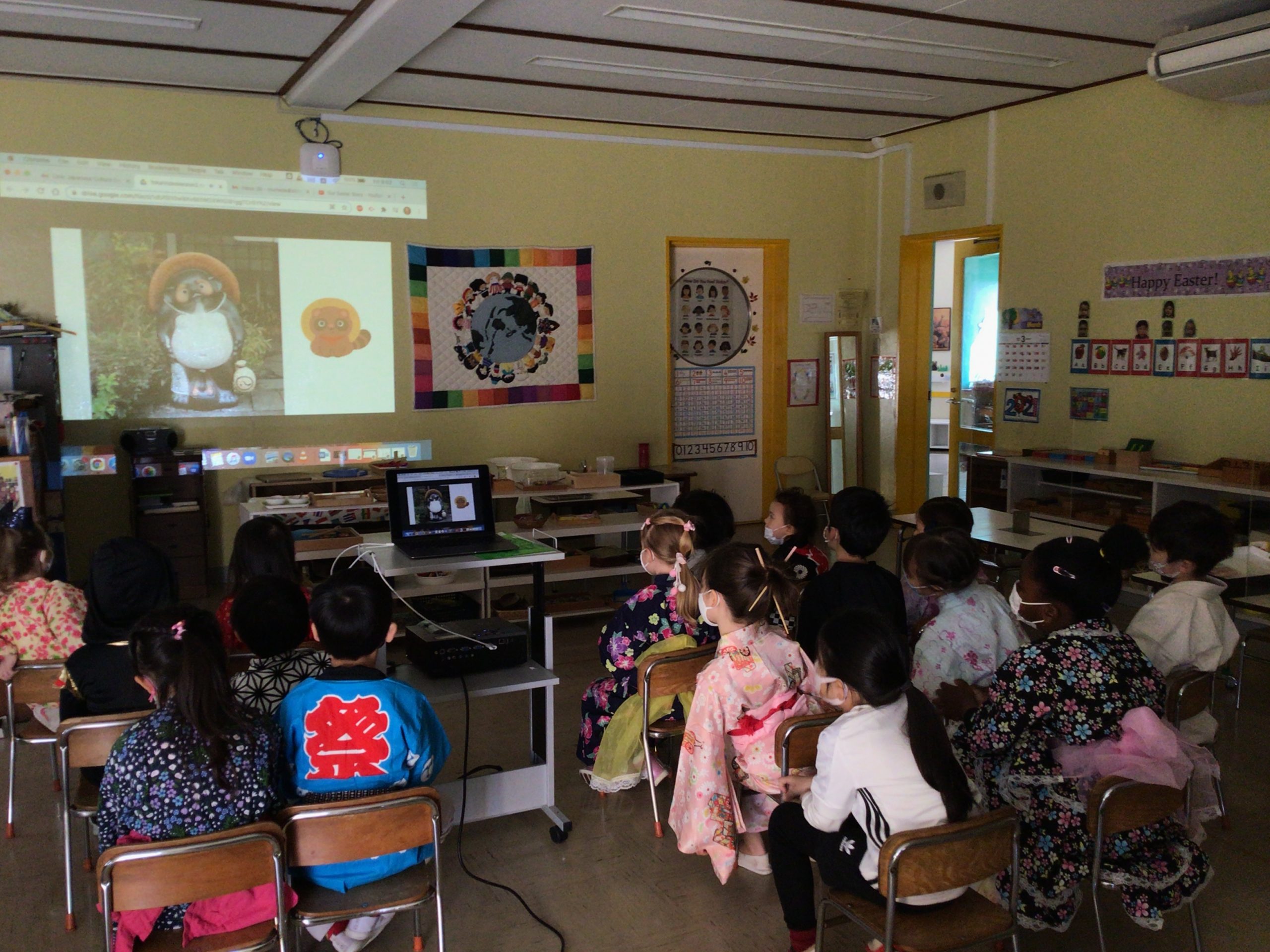 On the school-wide Japanese Day, we participated in listening to Okinawan music in the Fine Arts auditorium on Friday.
On the school-wide Japanese Day, we participated in listening to Okinawan music in the Fine Arts auditorium on Friday.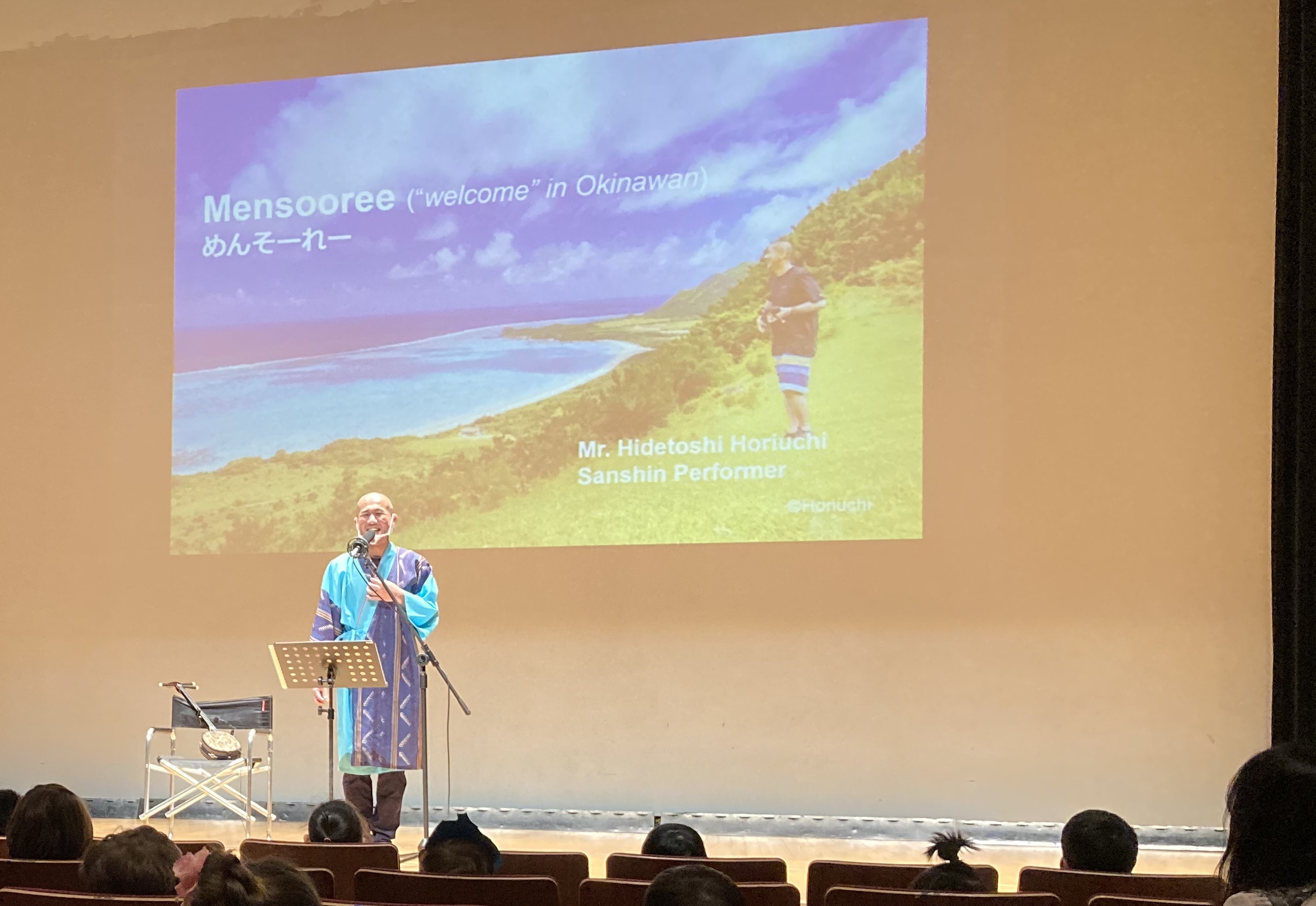 Japanese Costume Day: The children and faculty wore Japanese traditional or modern versions of the kimono, yukata, happi coat, hanten, ninja, karate or soccer uniforms.
Japanese Costume Day: The children and faculty wore Japanese traditional or modern versions of the kimono, yukata, happi coat, hanten, ninja, karate or soccer uniforms.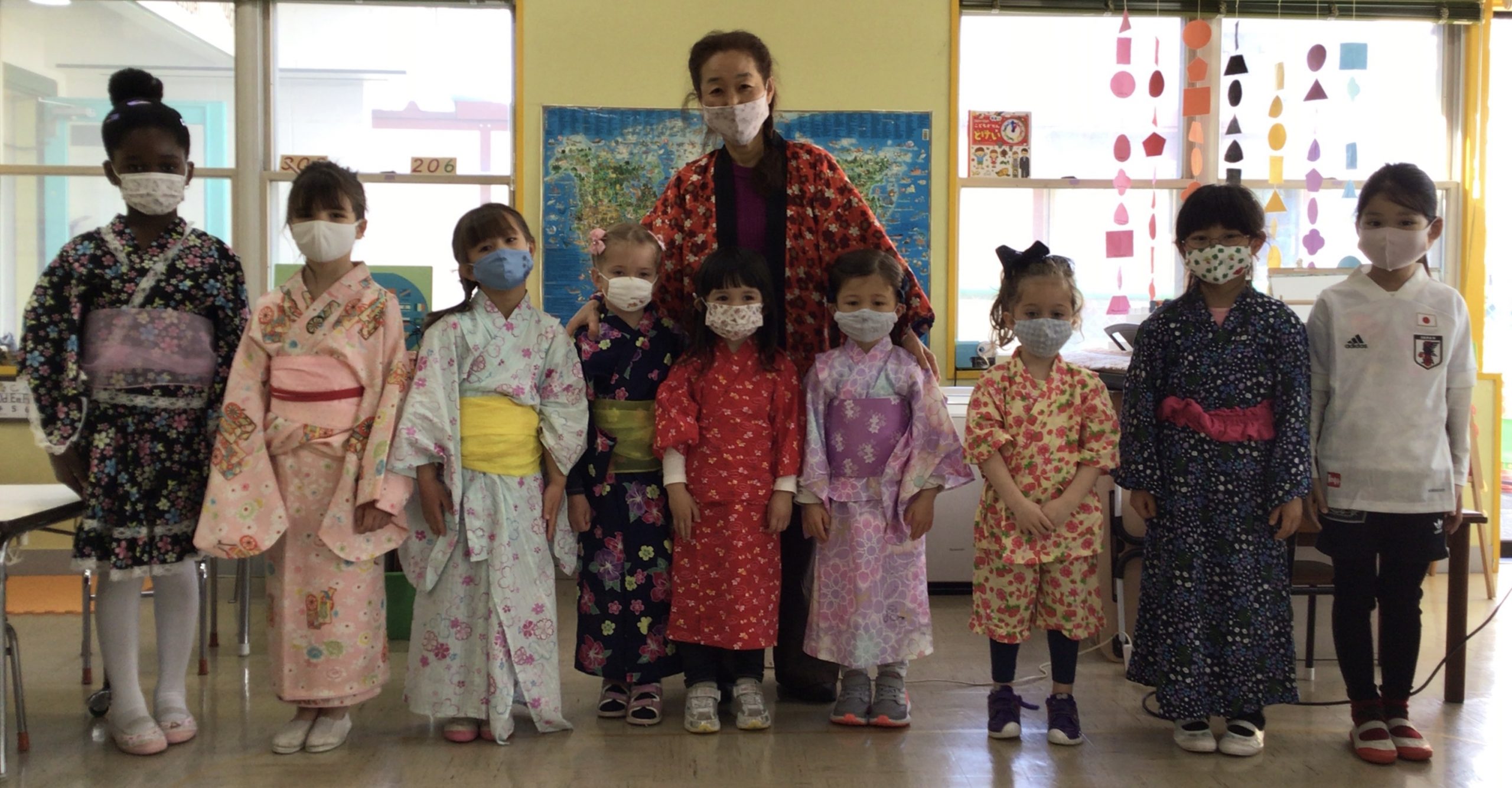
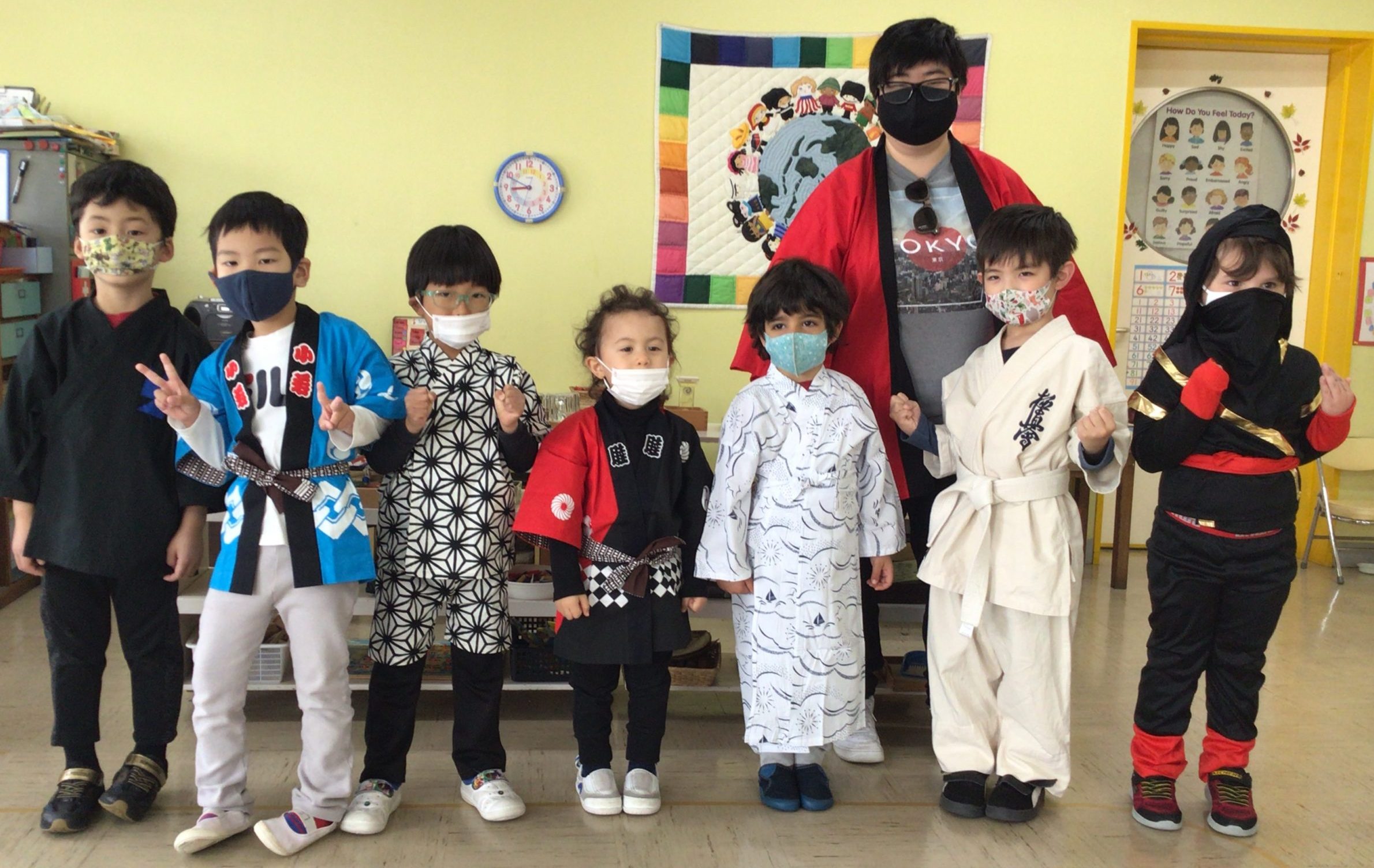 Since Japanese Week fell in the midst of Sakura blossoms, we took a little stroll outside the campus, walking to nearby Motomachi Park for some Sakura-viewing one nice sunny day.
Since Japanese Week fell in the midst of Sakura blossoms, we took a little stroll outside the campus, walking to nearby Motomachi Park for some Sakura-viewing one nice sunny day.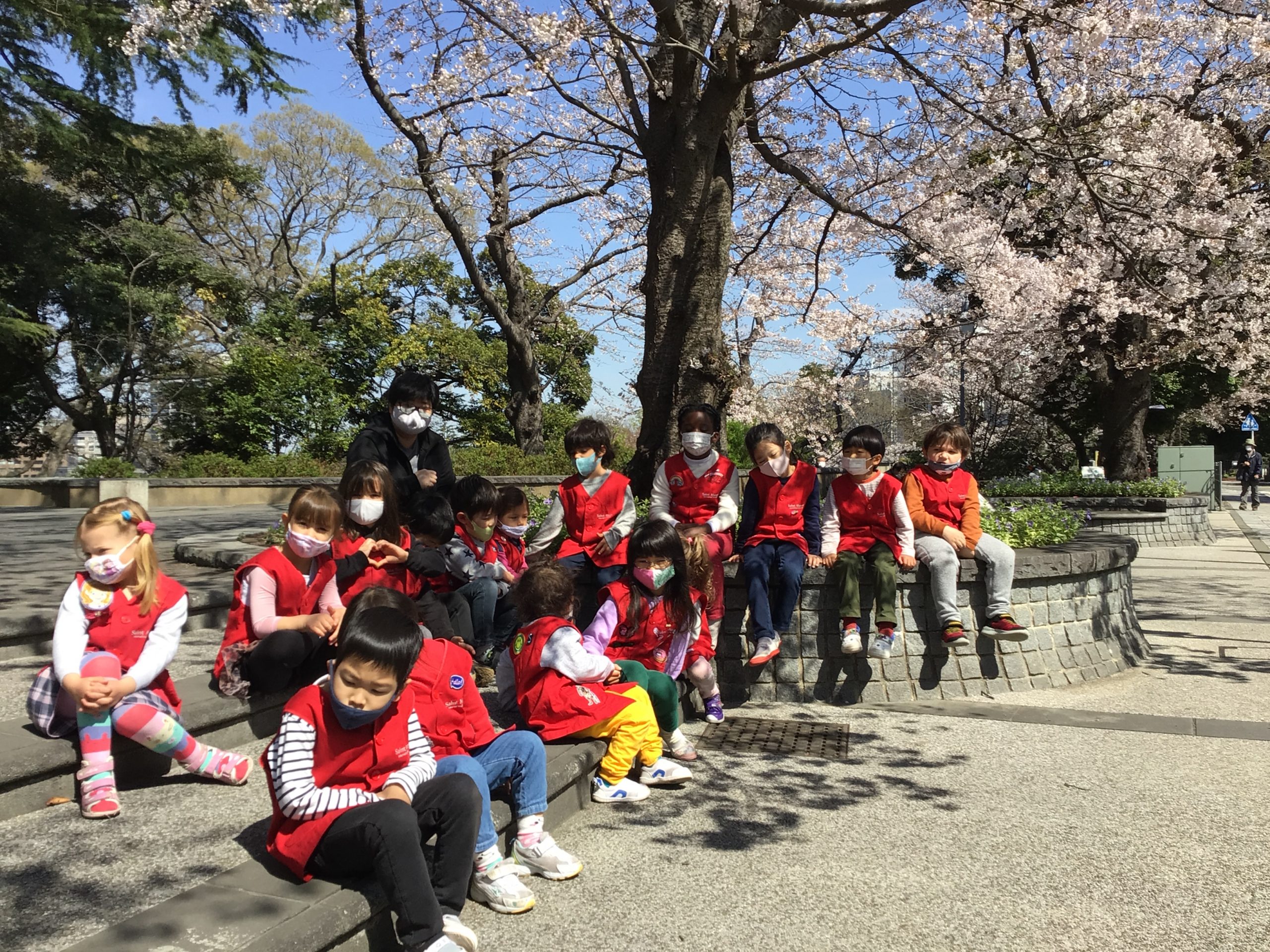
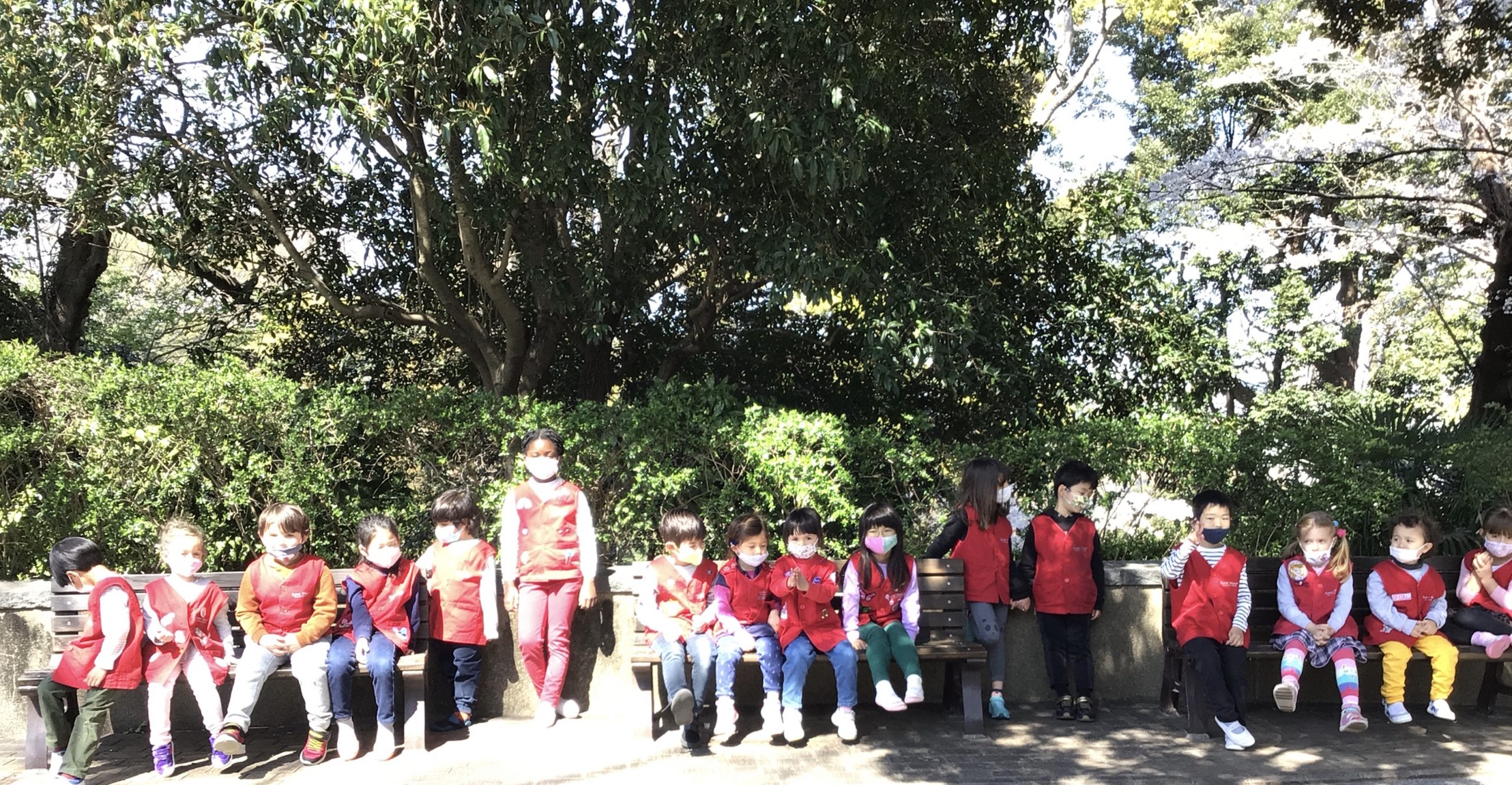
The colors of the Hinomaru, the Japanese flag, are red and white. 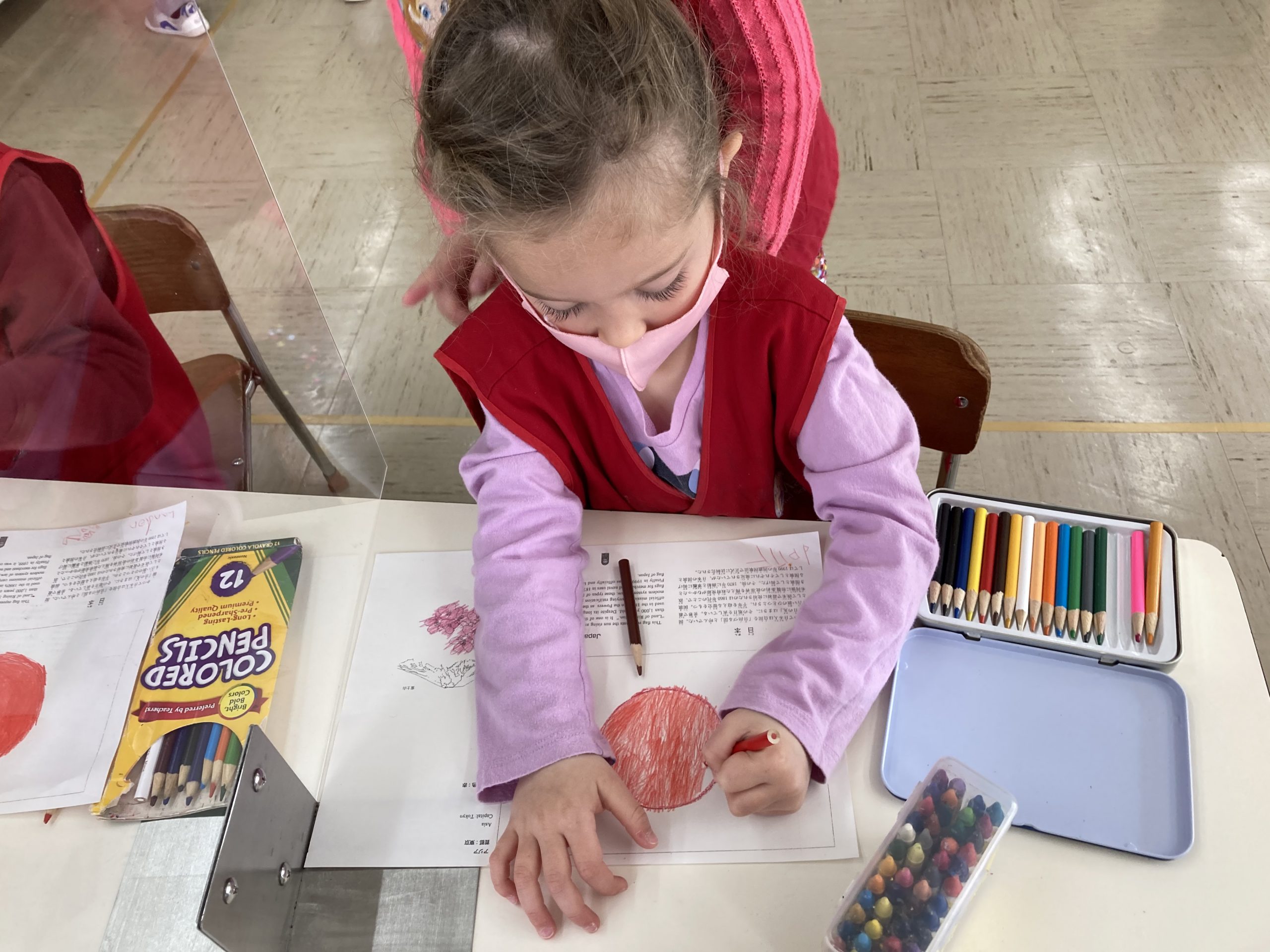 Some cute Japanese obento lunches by creative moms made lunchtime more fun for all. By the way, at lunchtime, we take off our masks, so the children eat in silence as much as possible. And we listen to music while eating.
Some cute Japanese obento lunches by creative moms made lunchtime more fun for all. By the way, at lunchtime, we take off our masks, so the children eat in silence as much as possible. And we listen to music while eating.
More classroom activities: From butterfly puzzle making, matching shapes, fitting in Cylinder Blocks, to using tongs to transfer objects, and the Binomial Cube.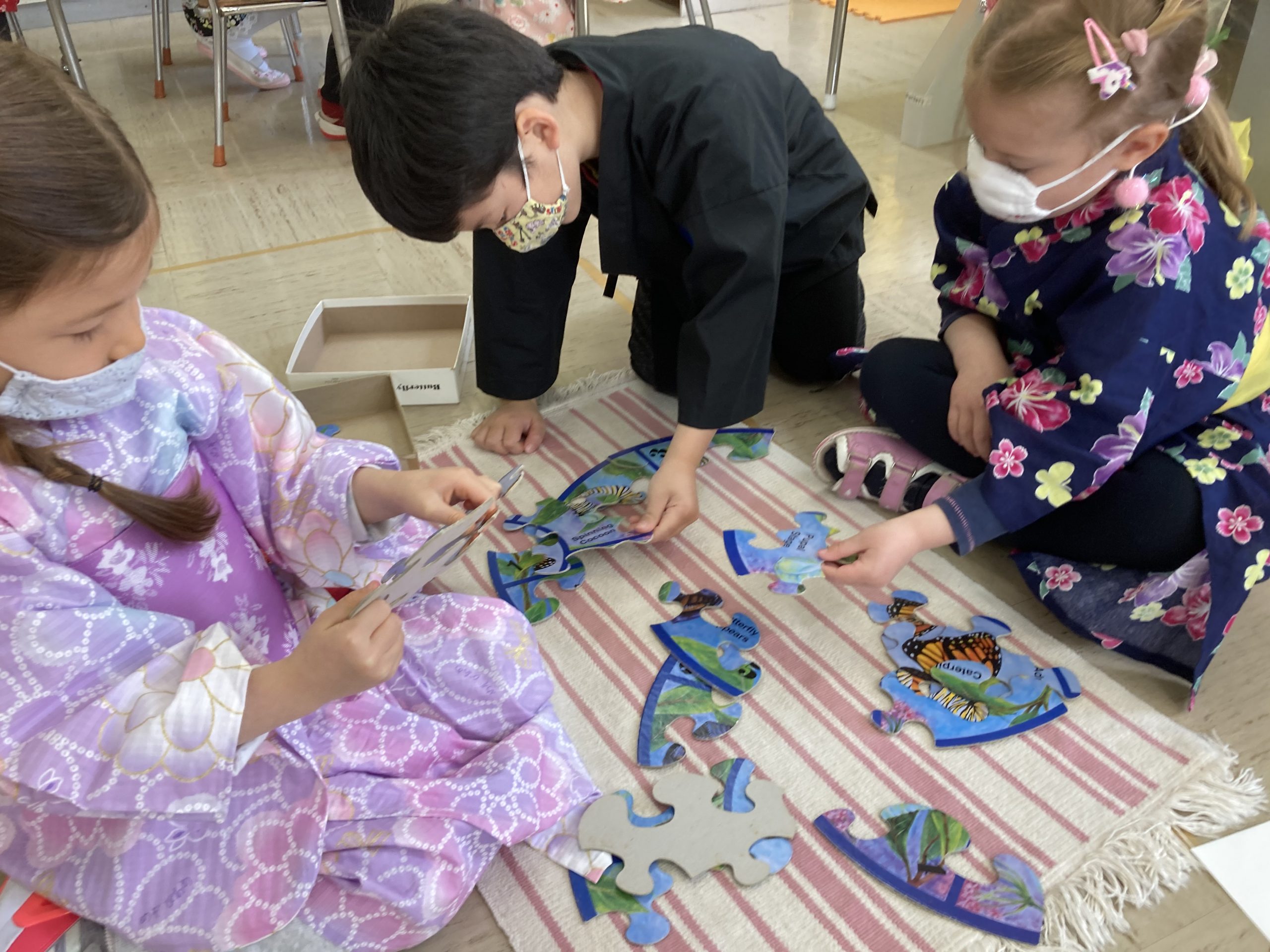
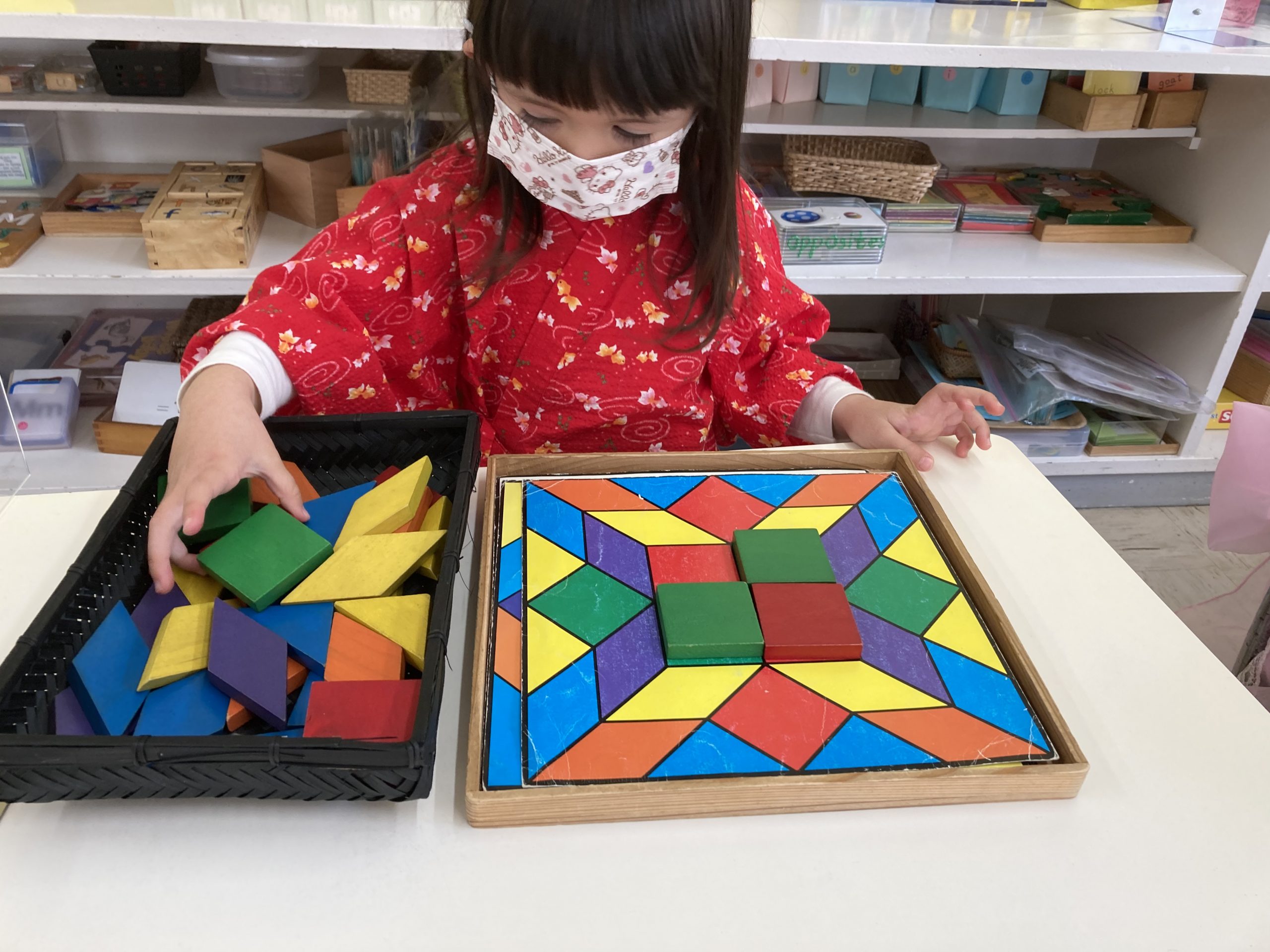
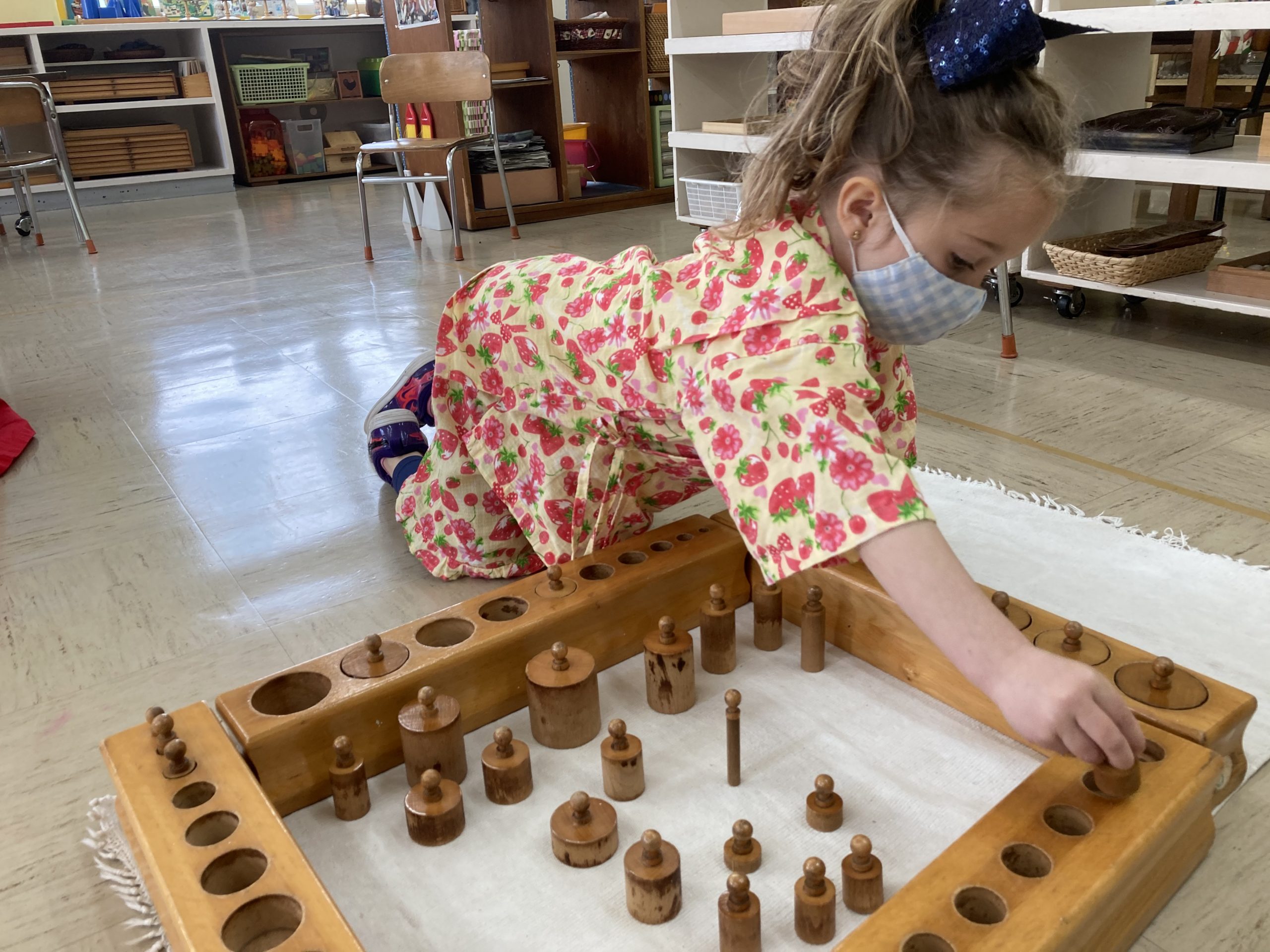
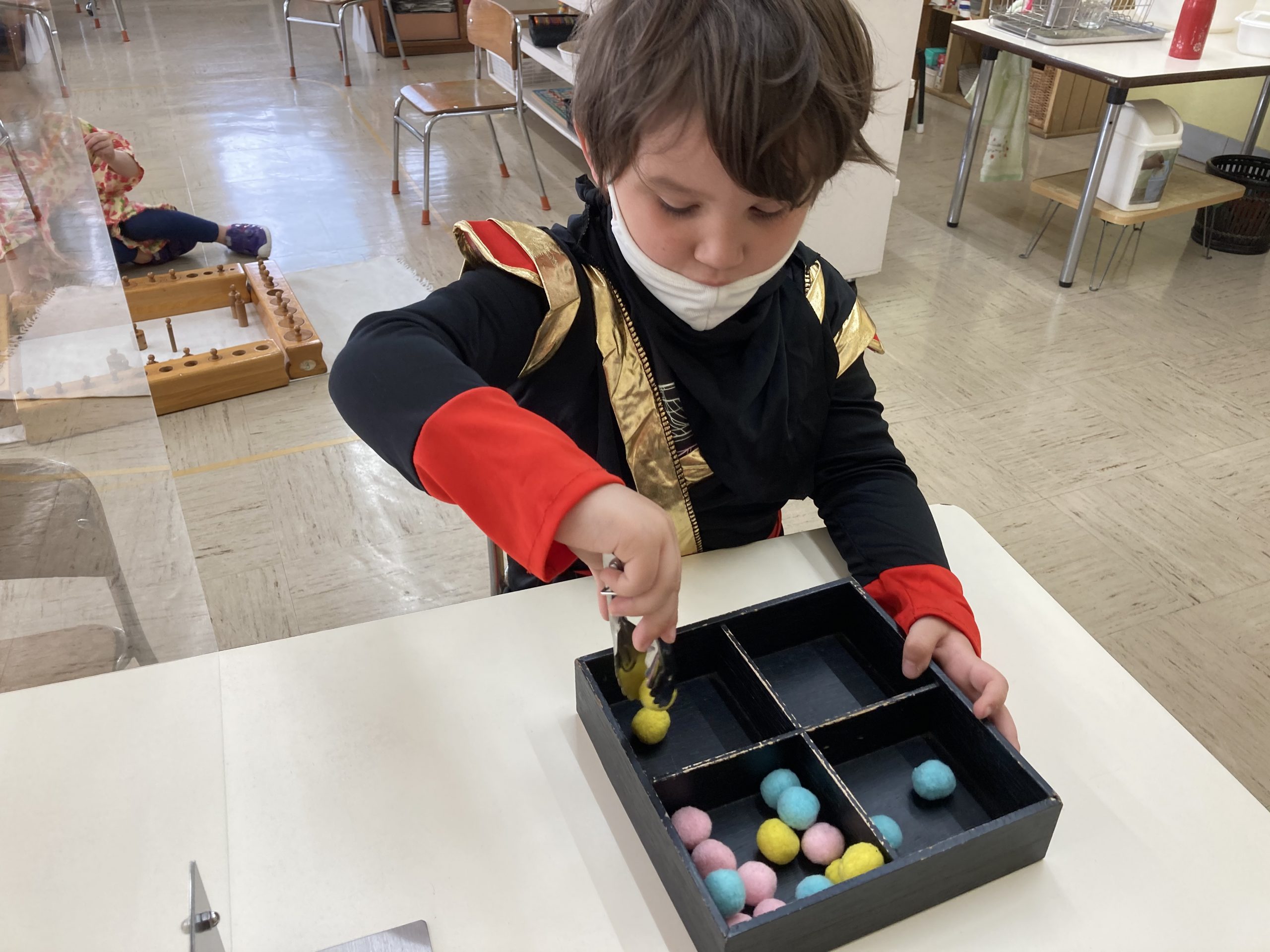
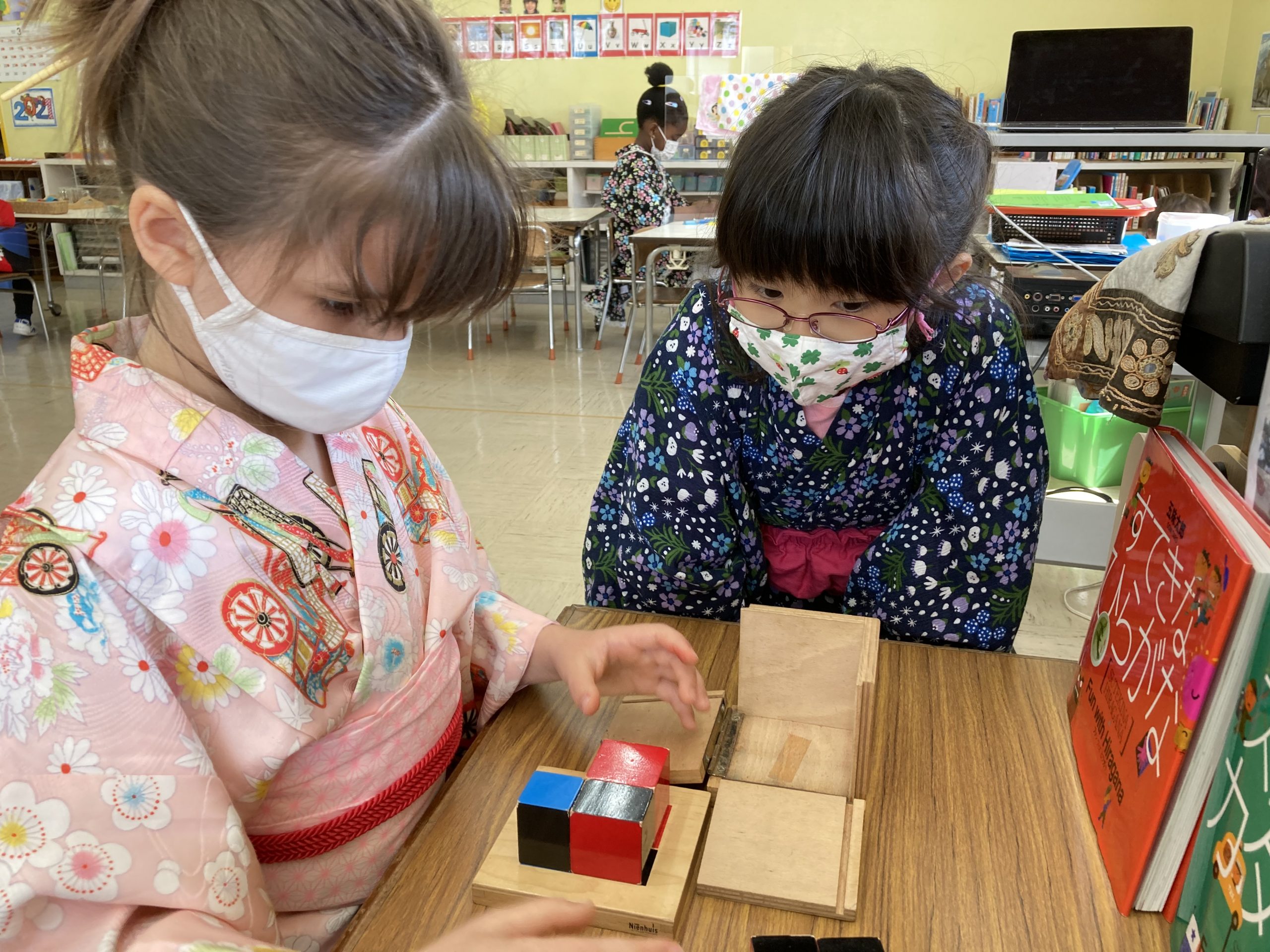 Story-writing is an on-going fun activity, especially for the pre-first graders. They are writing every chance they get. At this stage, it is not about spelling. It’s all about wanting to express themselves in writing. It’s okay to spell phonetically, as the children will learn to spell accurately in no time.
Story-writing is an on-going fun activity, especially for the pre-first graders. They are writing every chance they get. At this stage, it is not about spelling. It’s all about wanting to express themselves in writing. It’s okay to spell phonetically, as the children will learn to spell accurately in no time.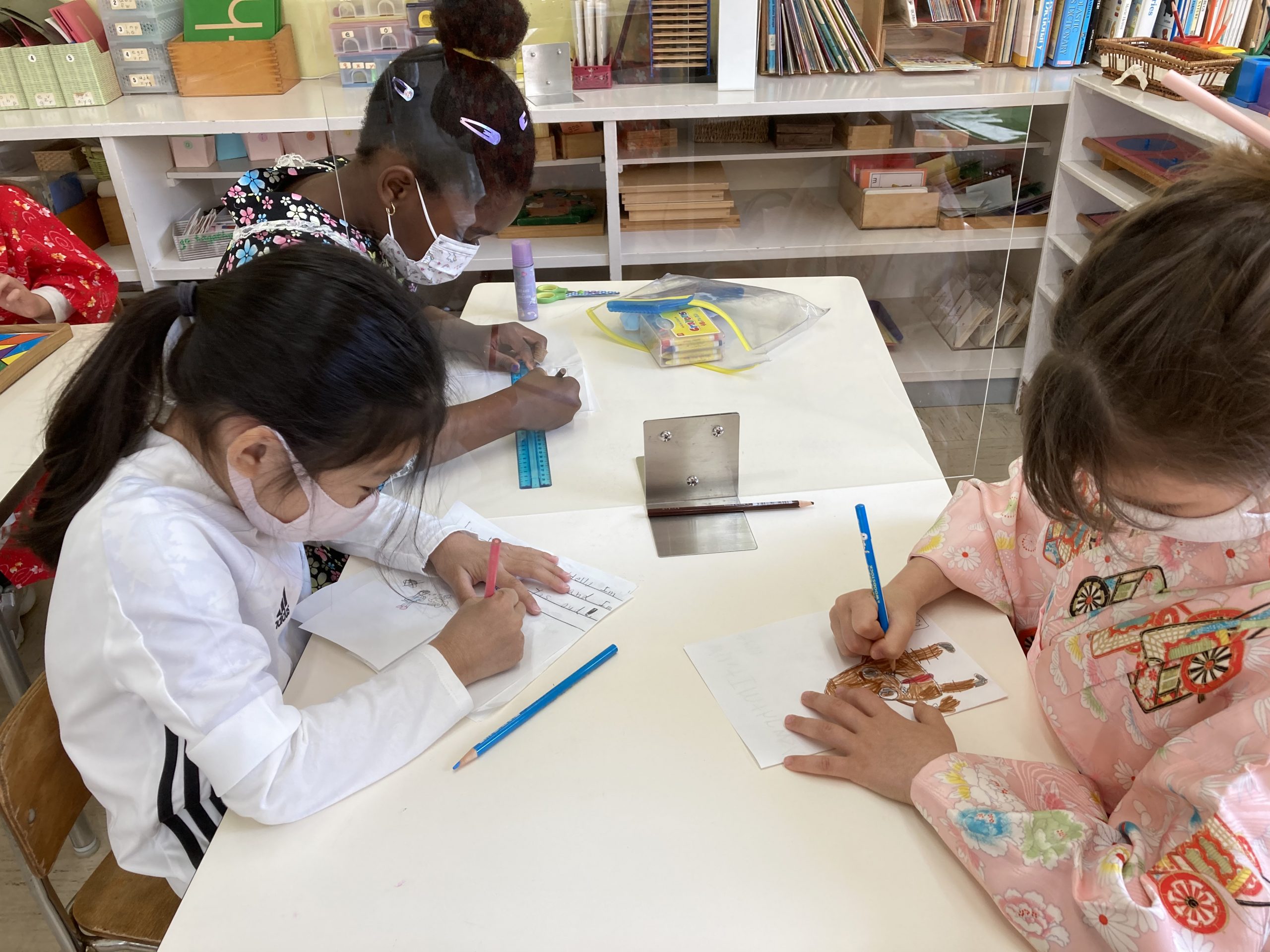
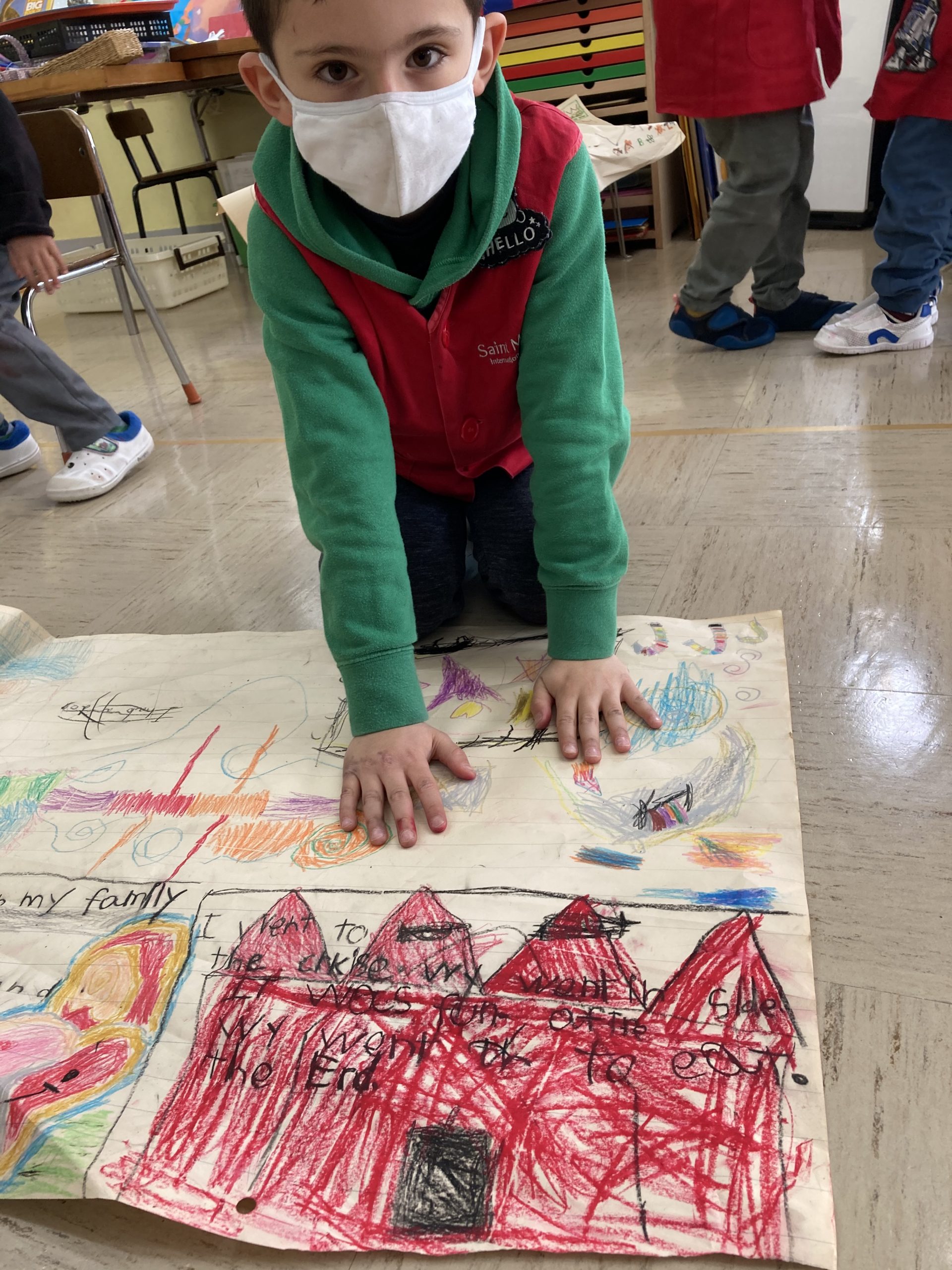
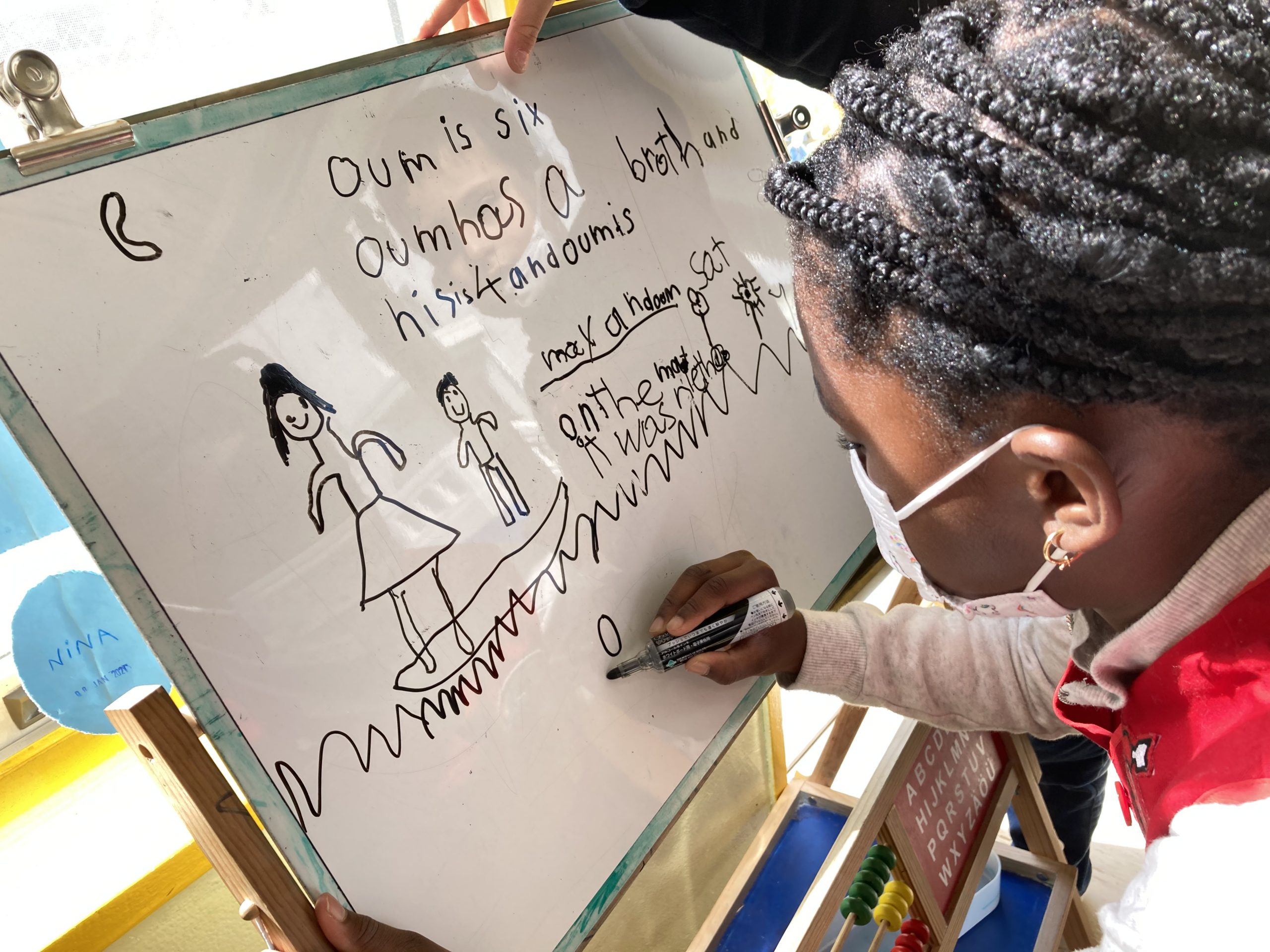
Sakura in full bloom, at the school entrance and the Futaba passage-way… a popular seasonal occurrence.